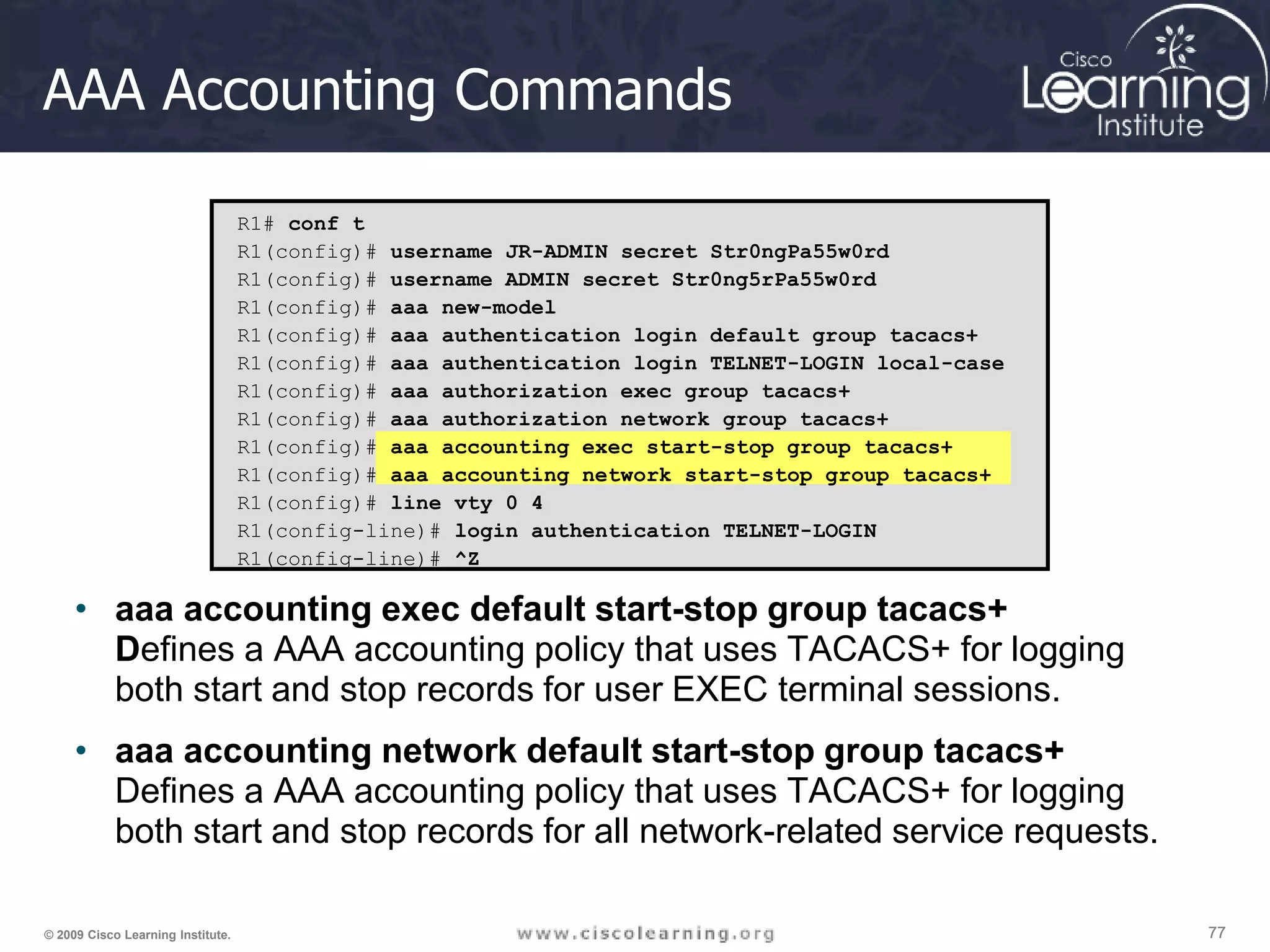This document provides an overview of authentication, authorization, and accounting (AAA) and describes how to configure AAA using local and server-based methods. It covers the purpose and components of AAA, including authentication, authorization, and accounting. It also describes how to configure local AAA authentication using the command line interface or Security Device Manager and how to troubleshoot local AAA. Finally, it introduces server-based AAA, comparing it to local AAA, and provides an overview of the TACACS+ and RADIUS protocols used for server-based AAA communication.



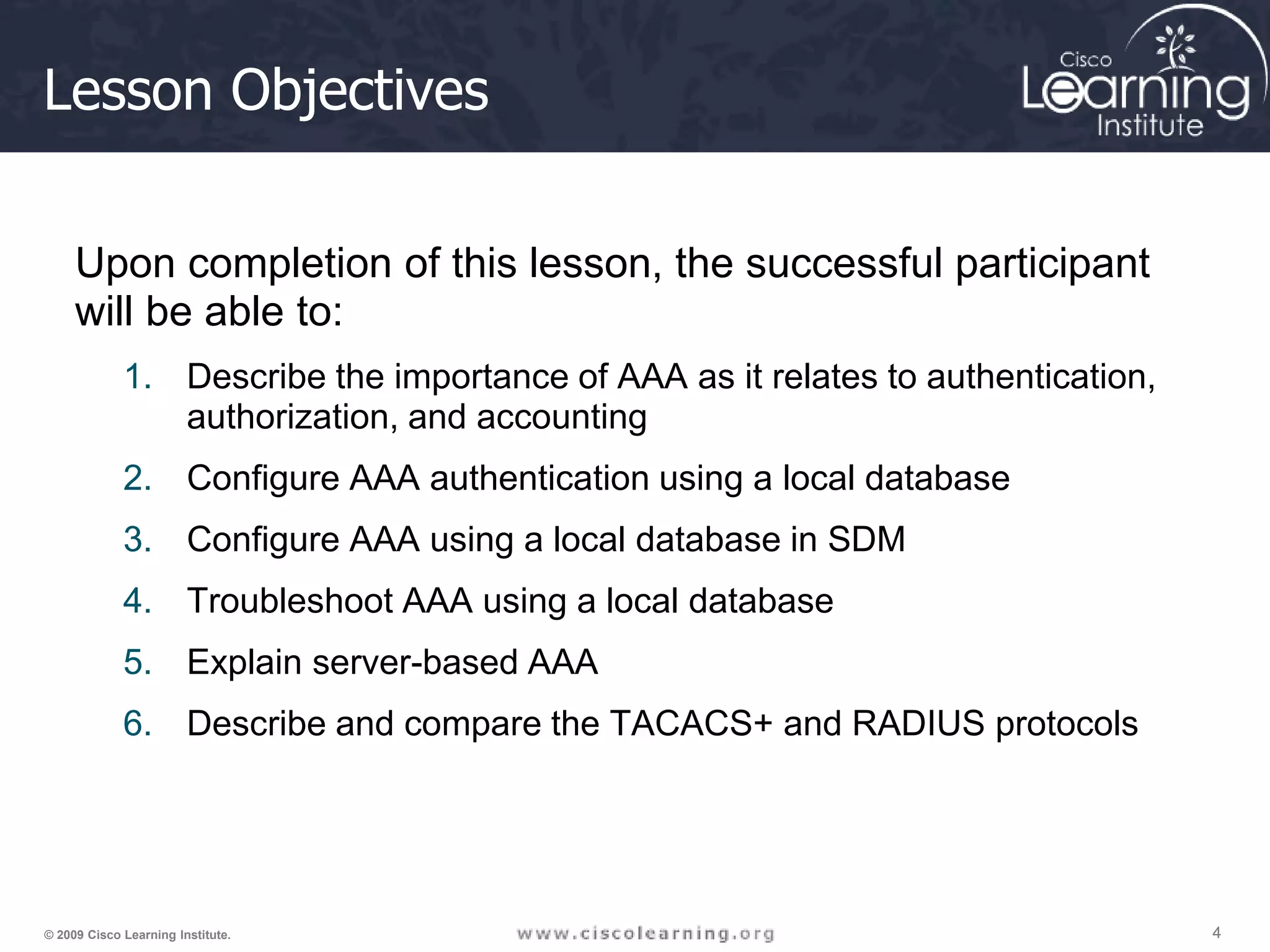
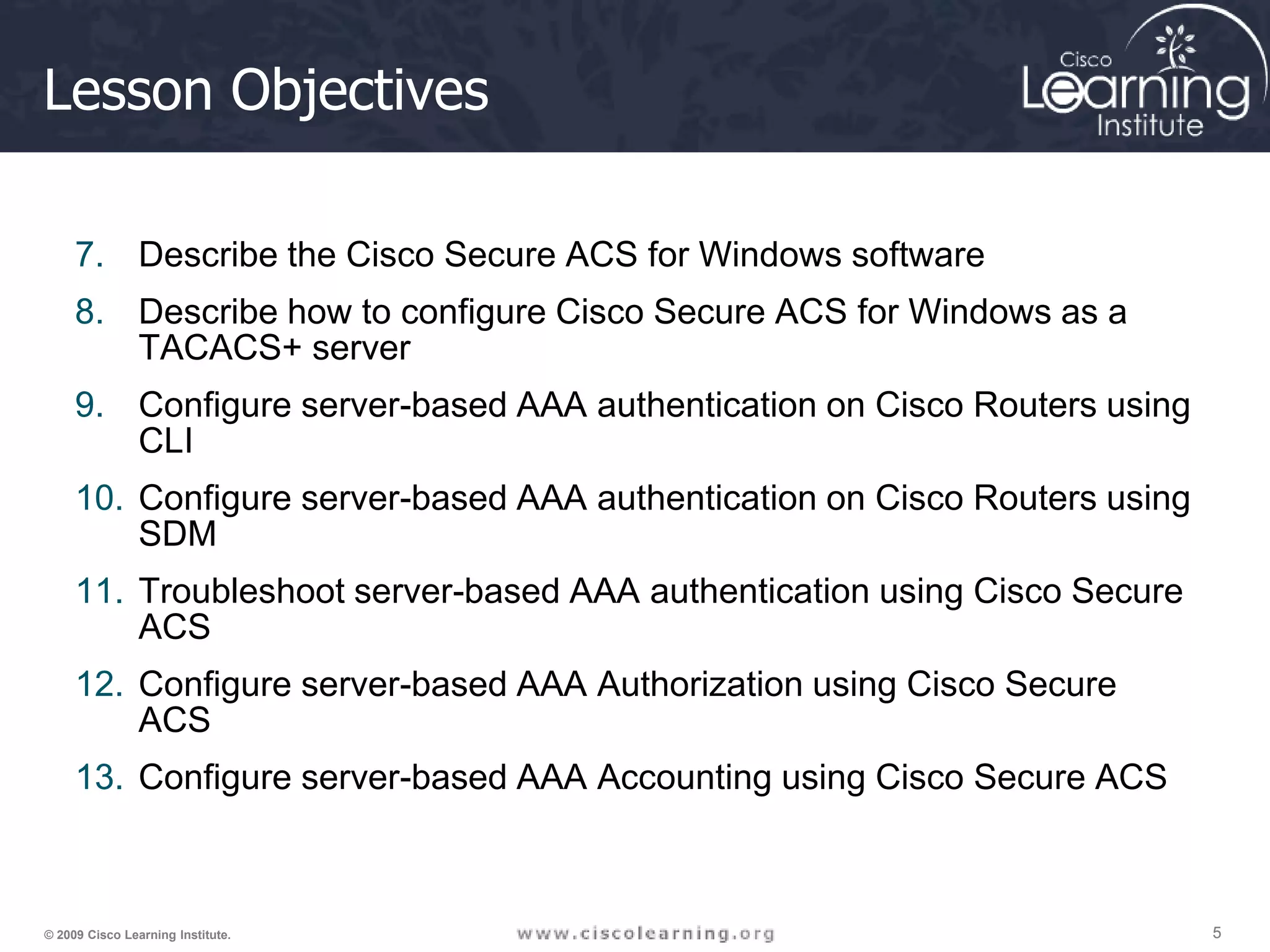
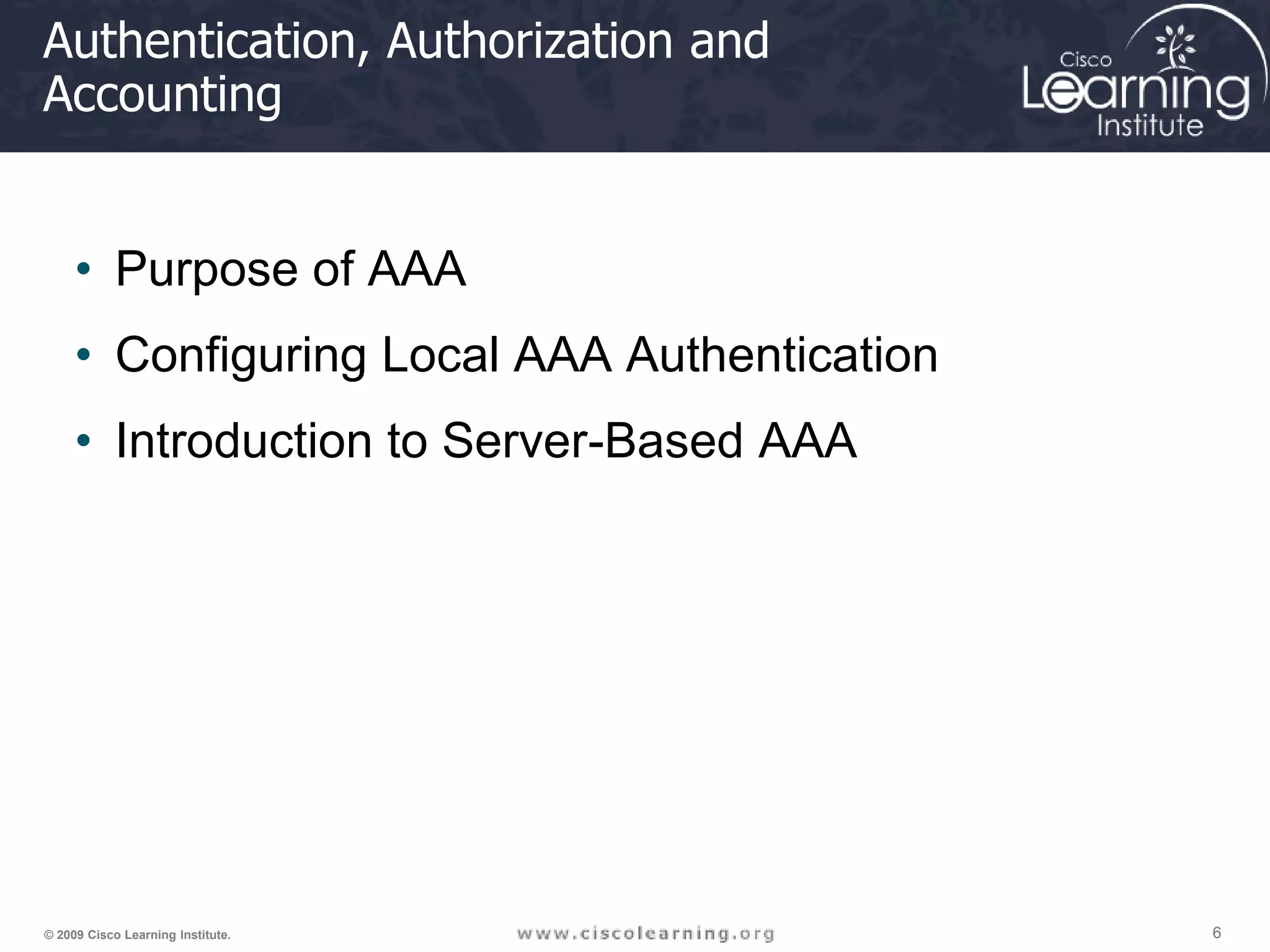



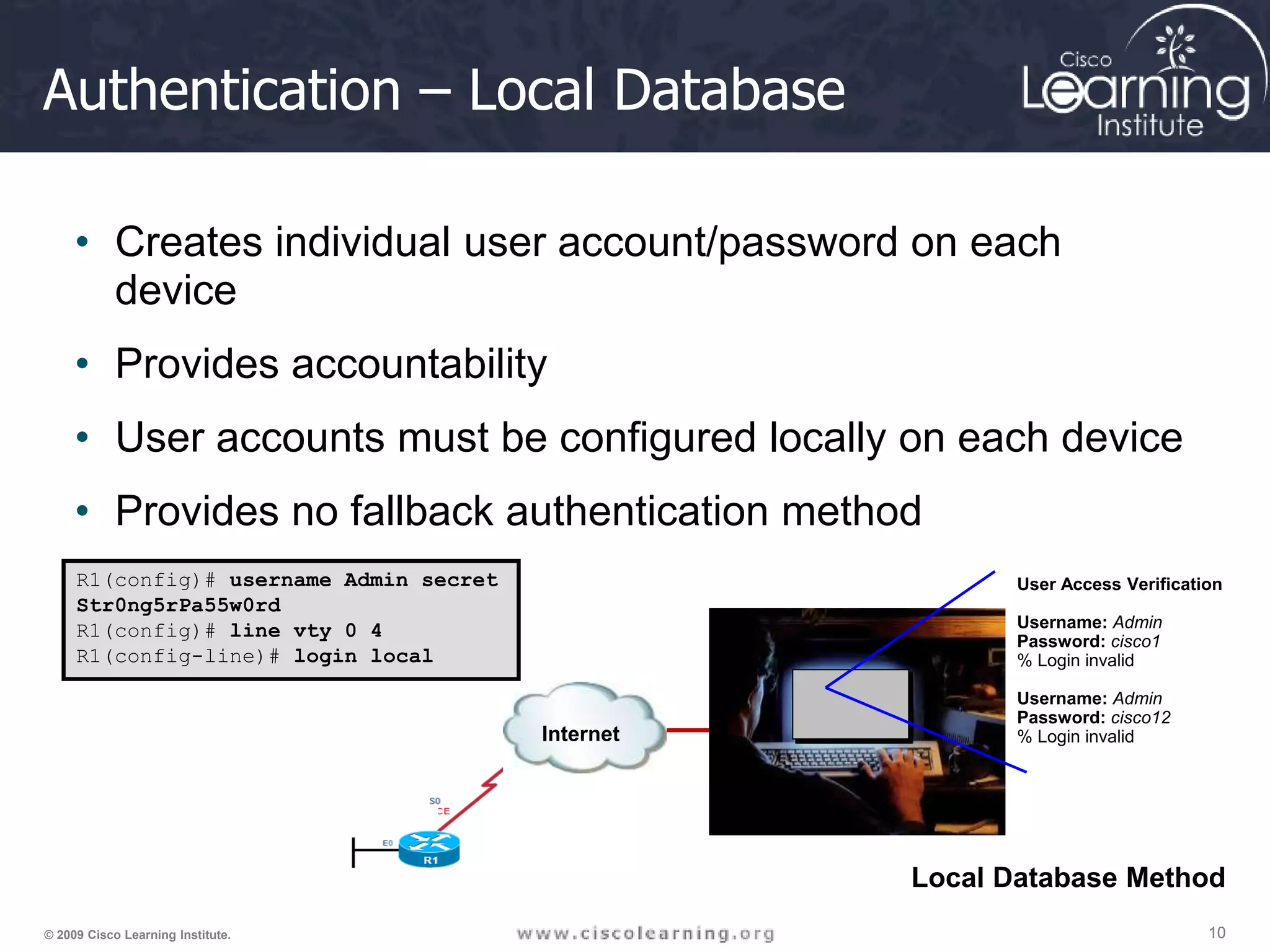






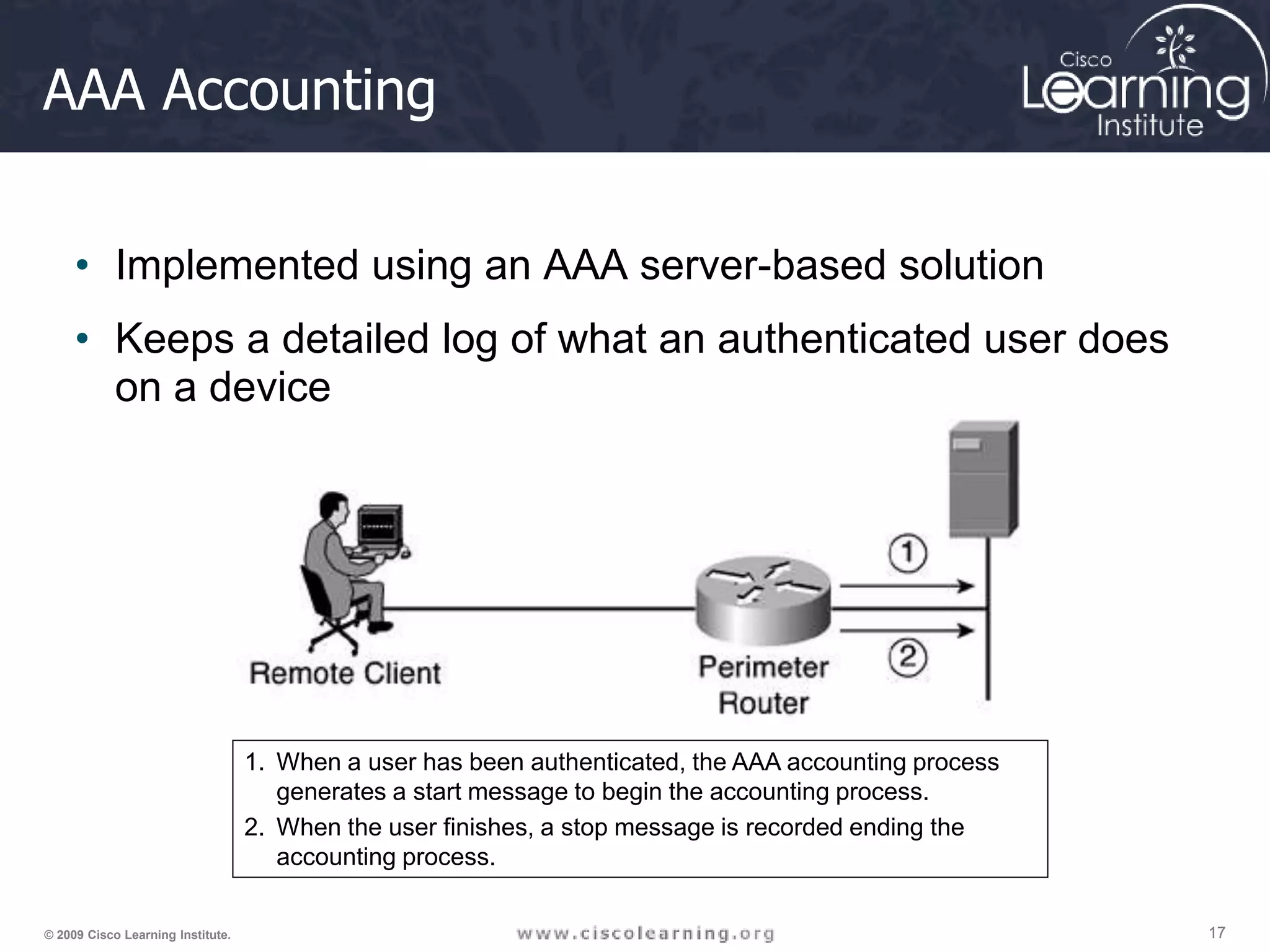

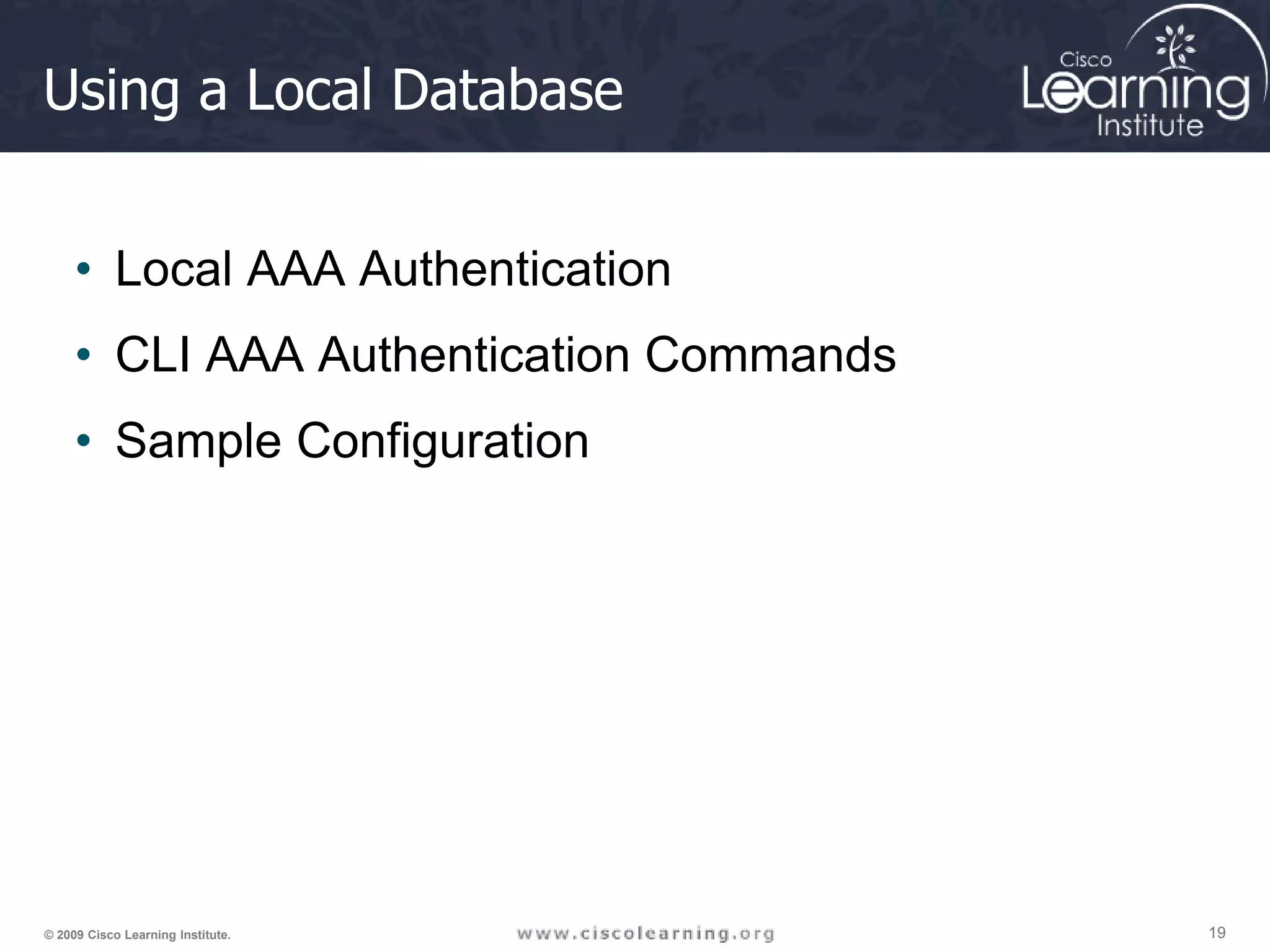
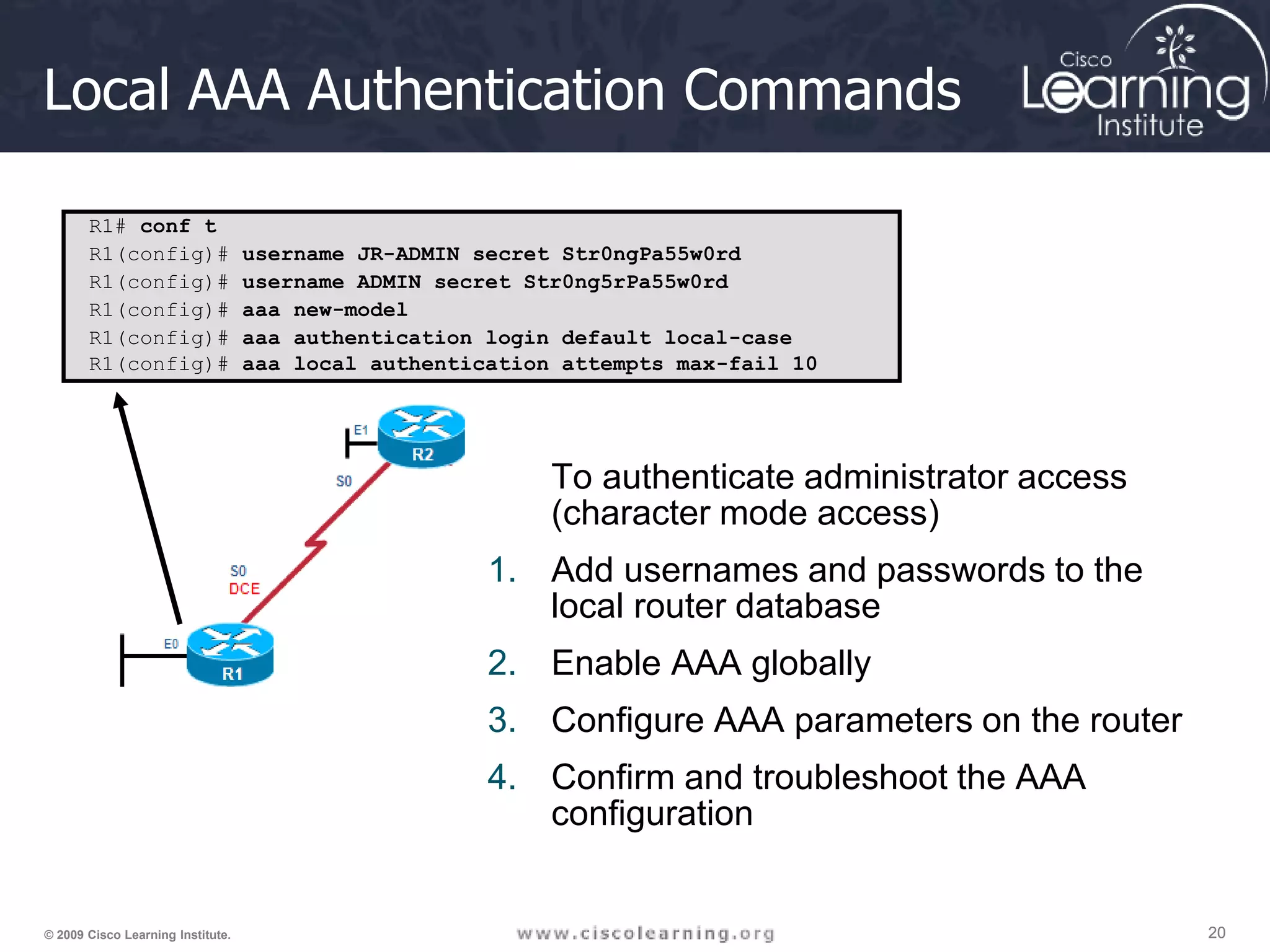

![22 22 22 © 2009 Cisco Learning Institute. AAA Authentication Command Elements router(config)# aaa authentication login {default | list-name} method1…[method4] Command Description default Uses the listed authentication methods that follow this keyword as the default list of methods when a user logs in list-name Character string used to name the list of authentication methods activated when a user logs in password- expiry Enables password aging on a local authentication list. method1 [method2... ] Identifies the list of methods that the authentication algorithm tries in the given sequence. You must enter at least one method; you may enter up to four methods.](https://image.slidesharecdn.com/ccnasecurity03-221023231315-844f5238/75/CCNA_Security_03-ppt-22-2048.jpg)
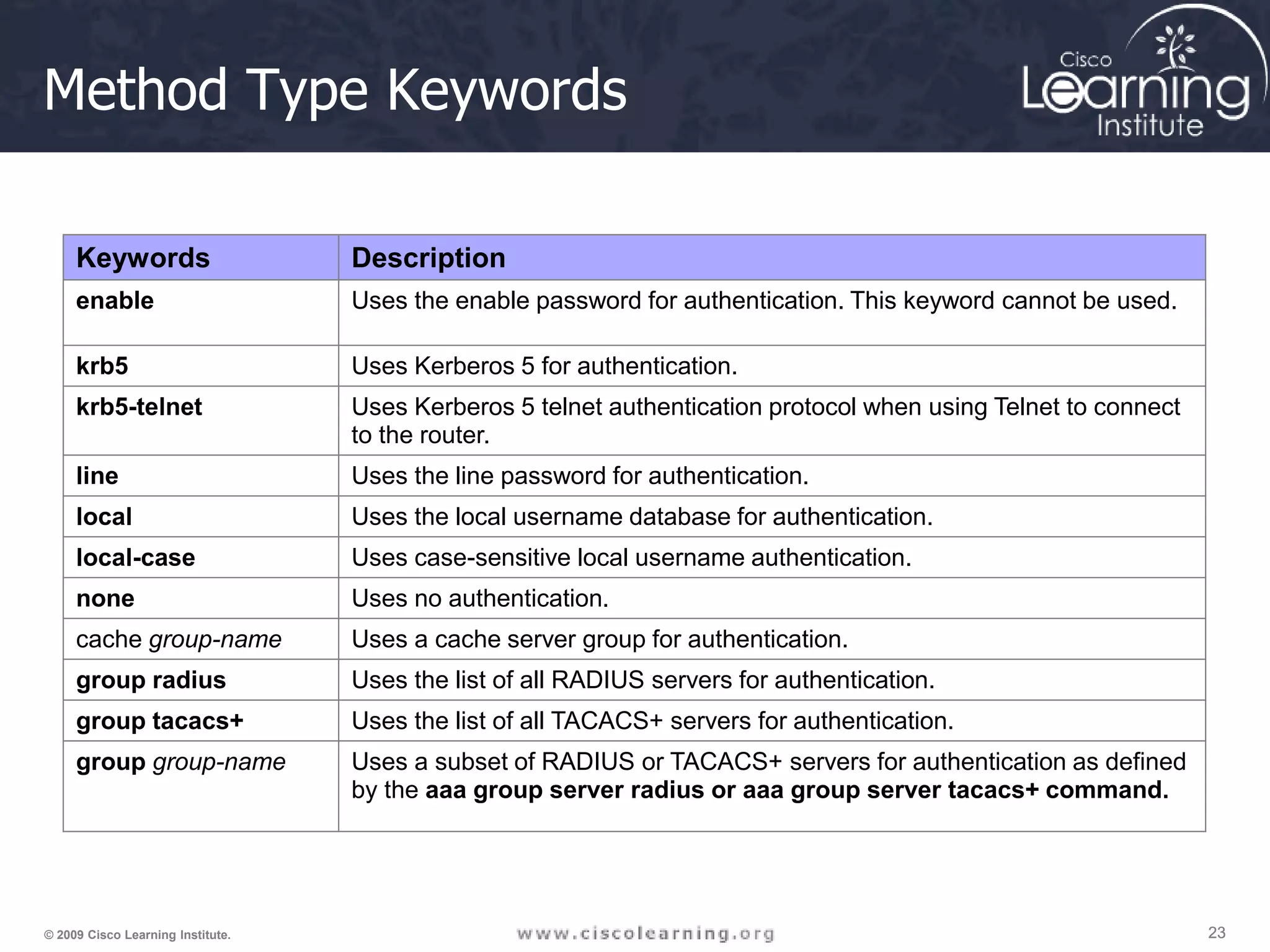
![24 24 24 © 2009 Cisco Learning Institute. Additional Security R1# show aaa local user lockout Local-user Lock time JR-ADMIN 04:28:49 UTC Sat Dec 27 2008 router(config)# aaa local authentication attempts max-fail [number-of- unsuccessful-attempts] R1# show aaa sessions Total sessions since last reload: 4 Session Id: 1 Unique Id: 175 User Name: ADMIN IP Address: 192.168.1.10 Idle Time: 0 CT Call Handle: 0](https://image.slidesharecdn.com/ccnasecurity03-221023231315-844f5238/75/CCNA_Security_03-ppt-24-2048.jpg)
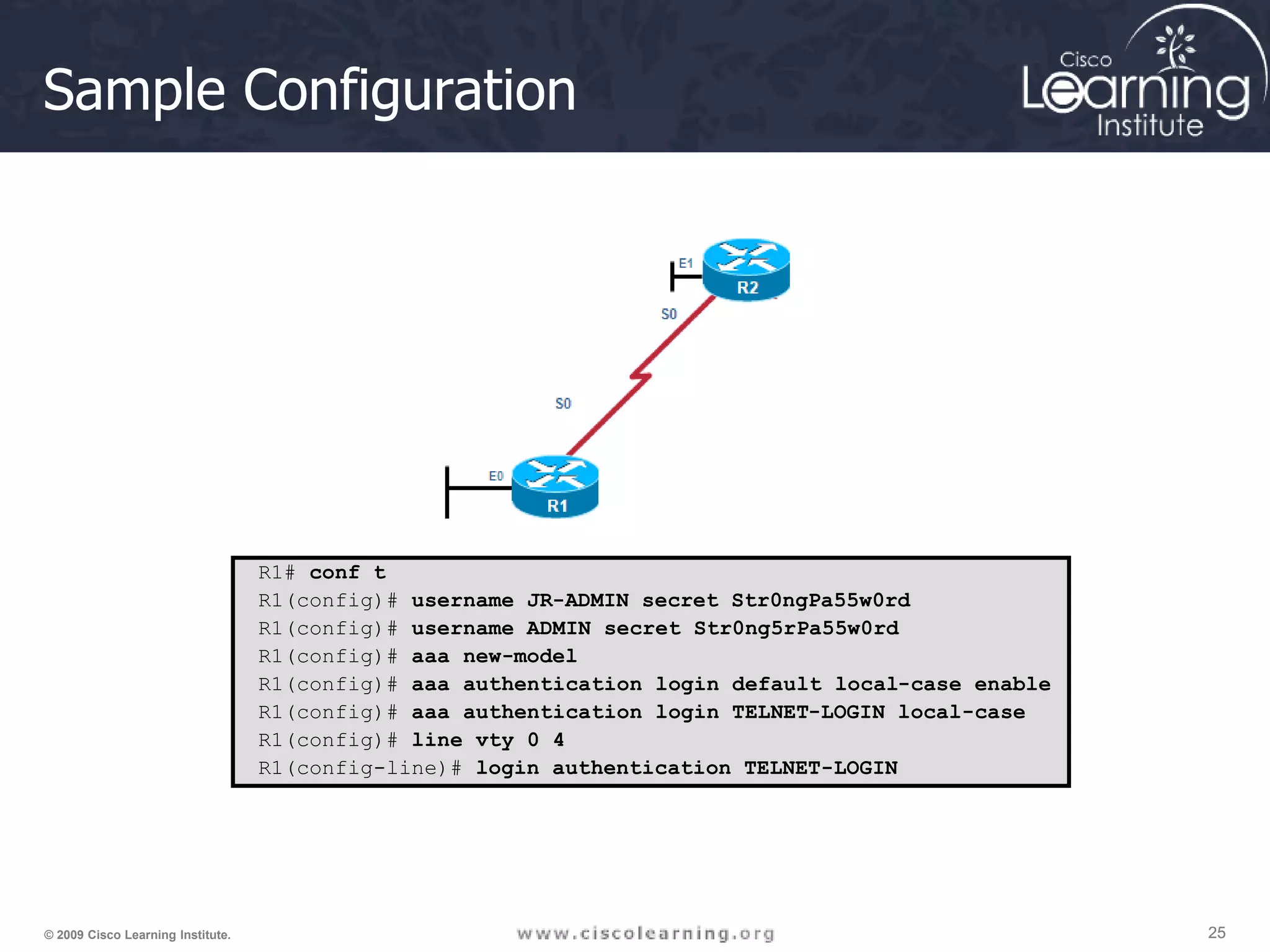
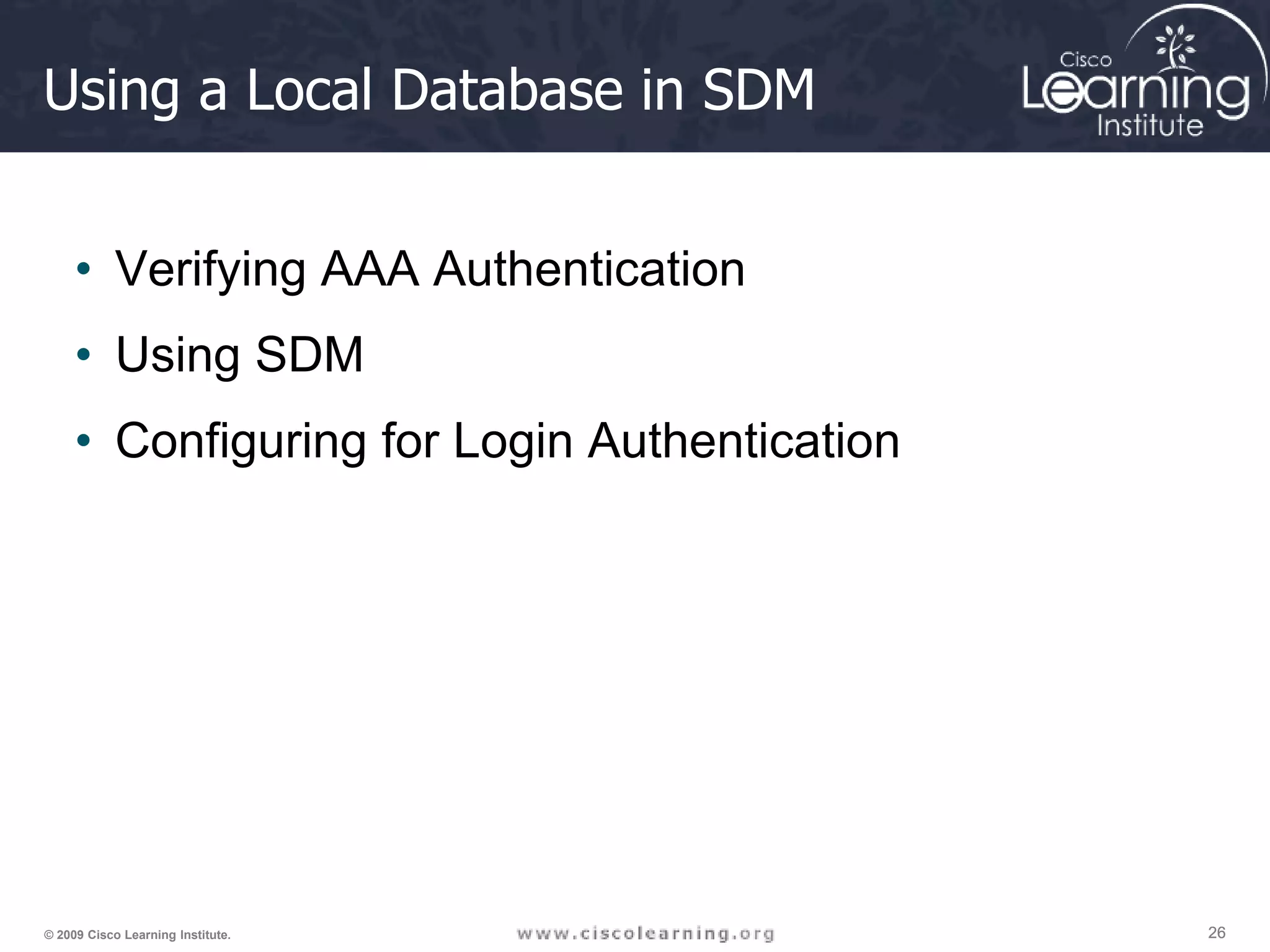
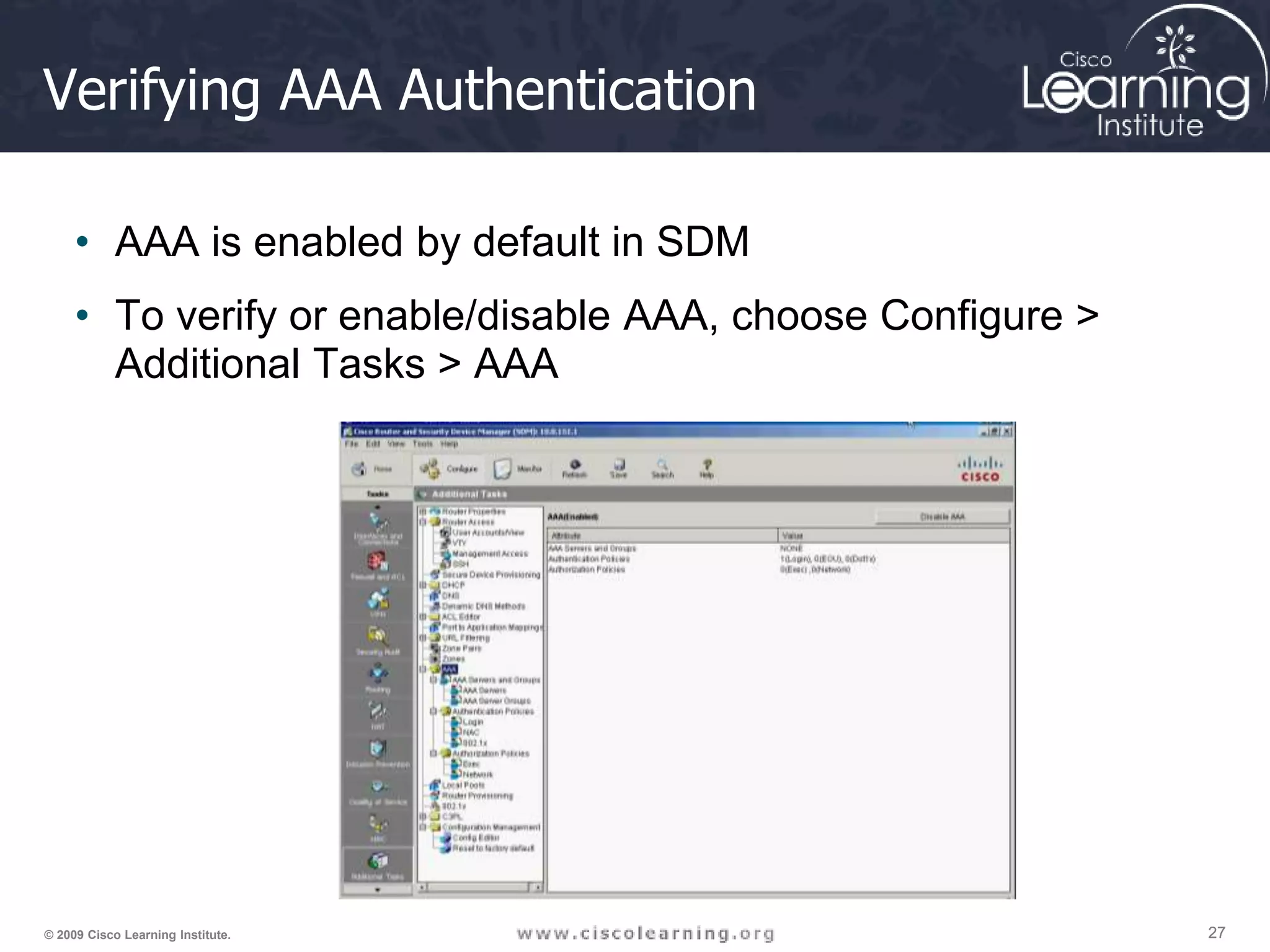
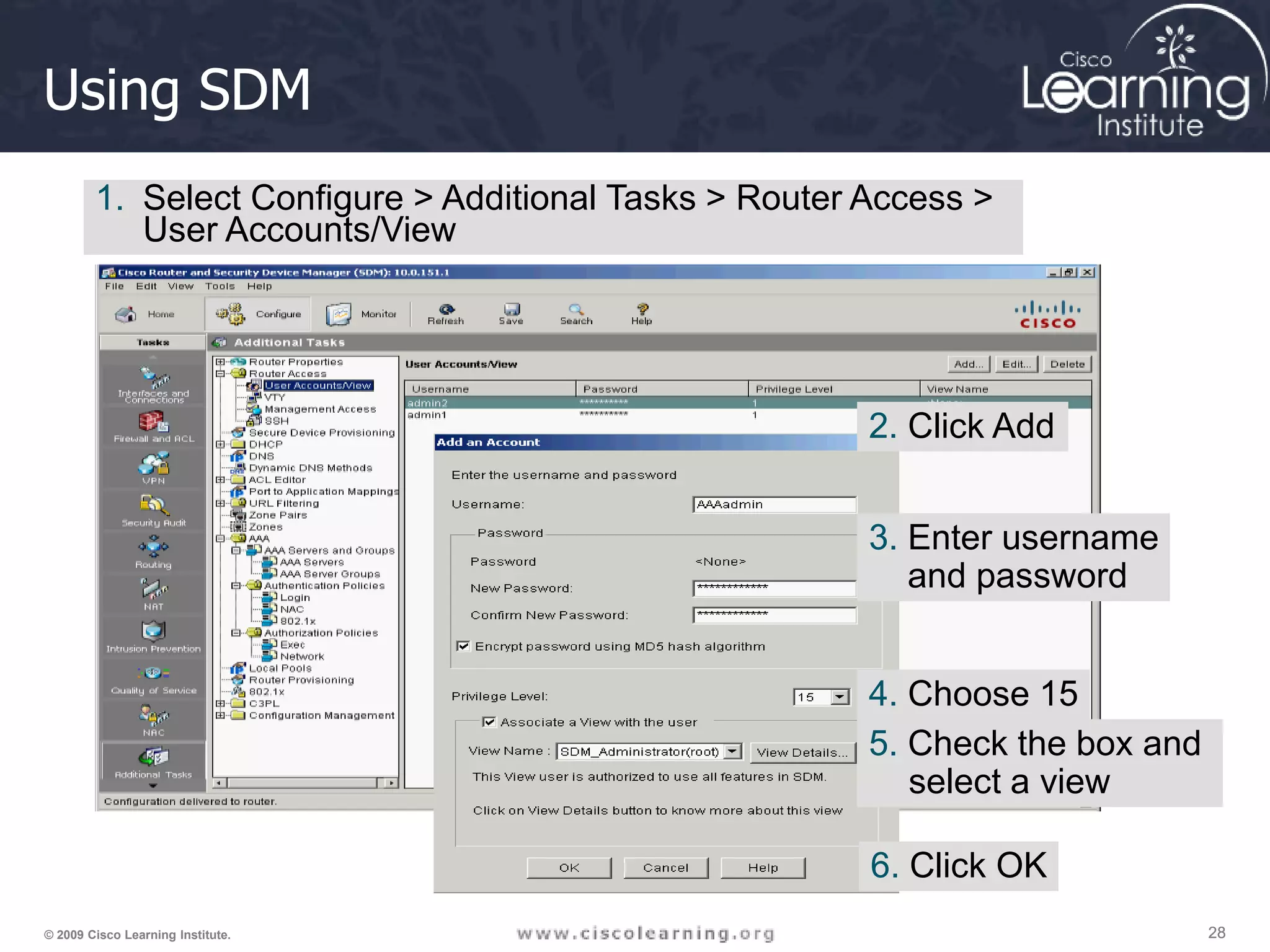

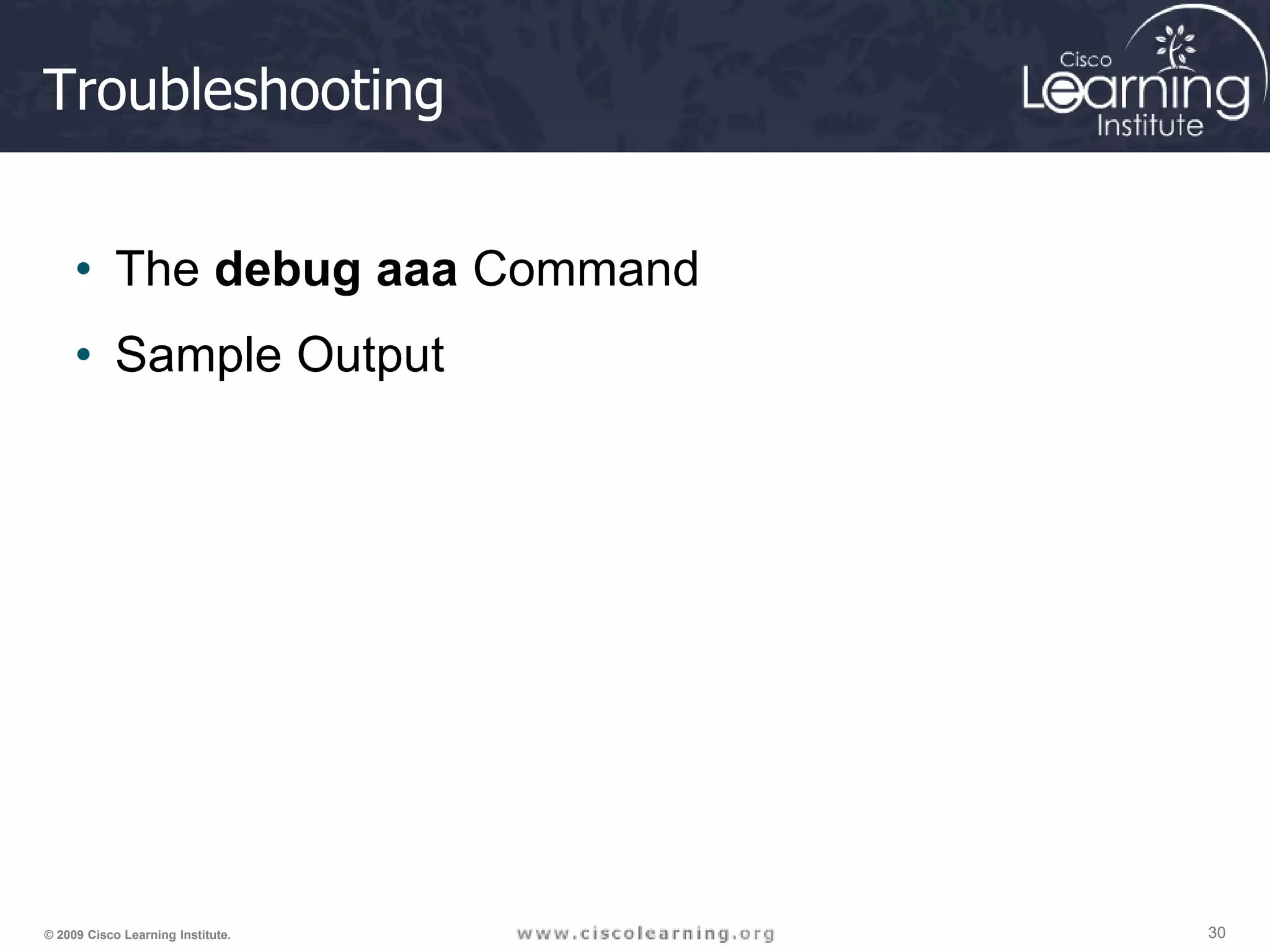

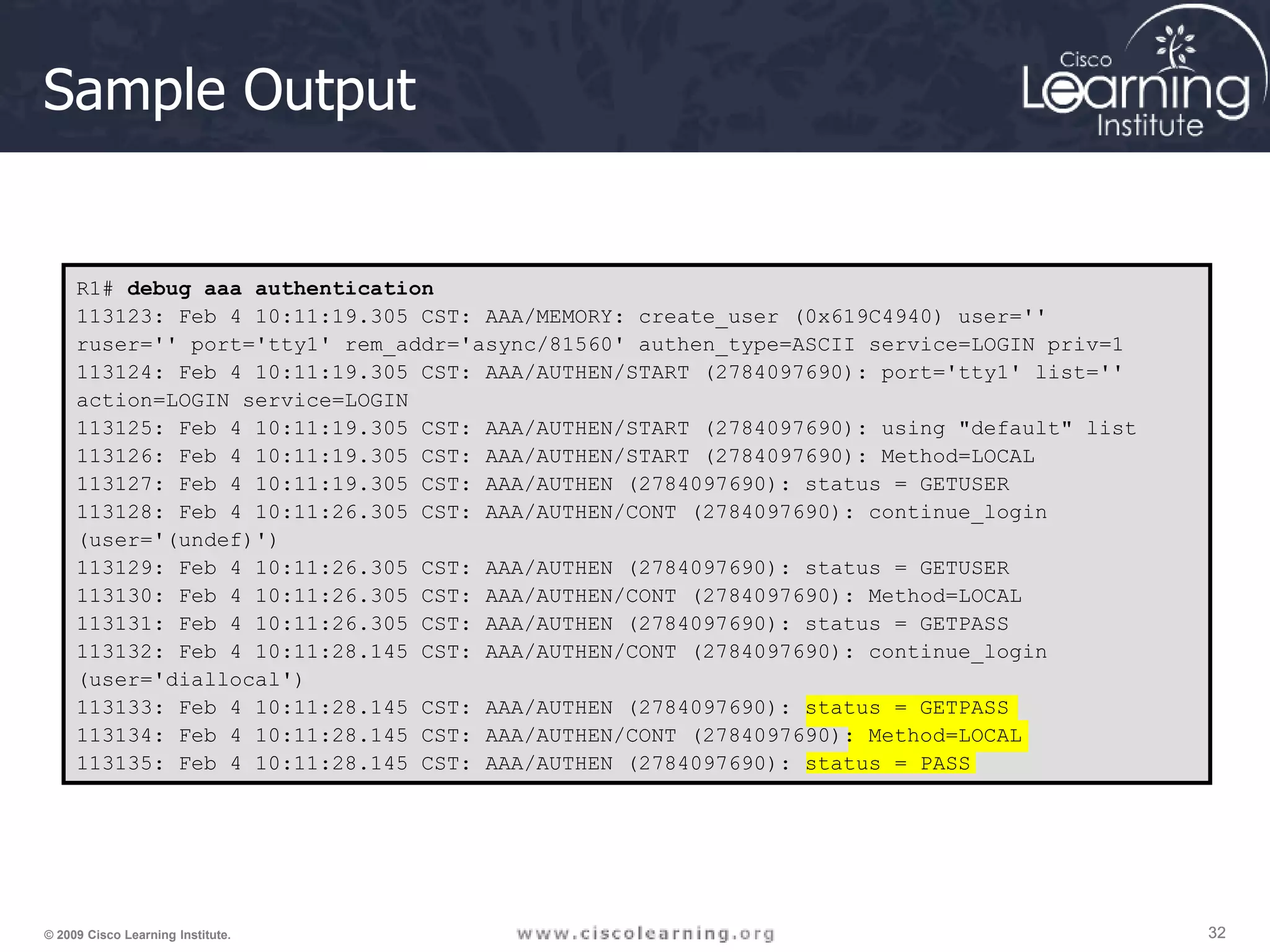
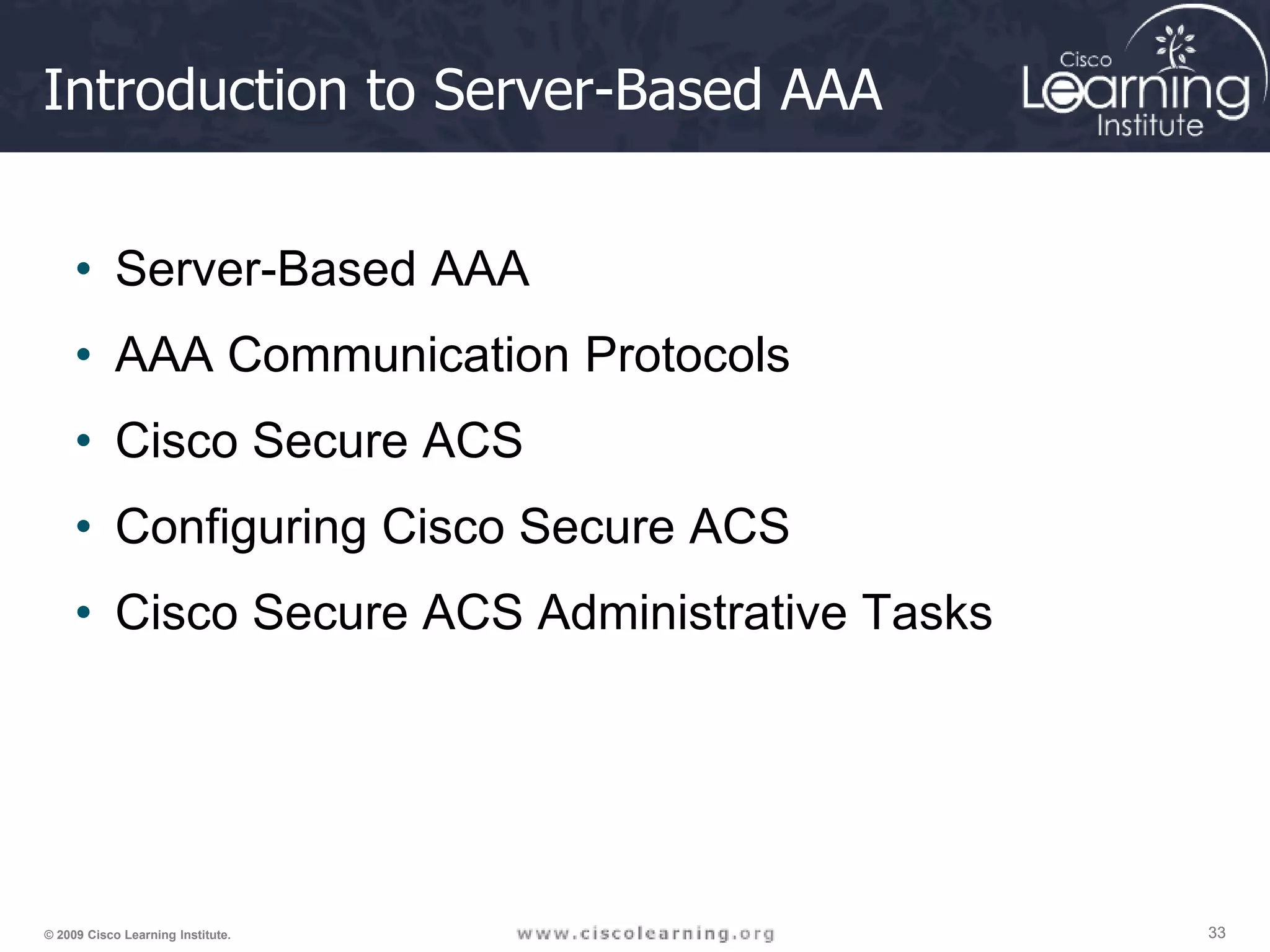
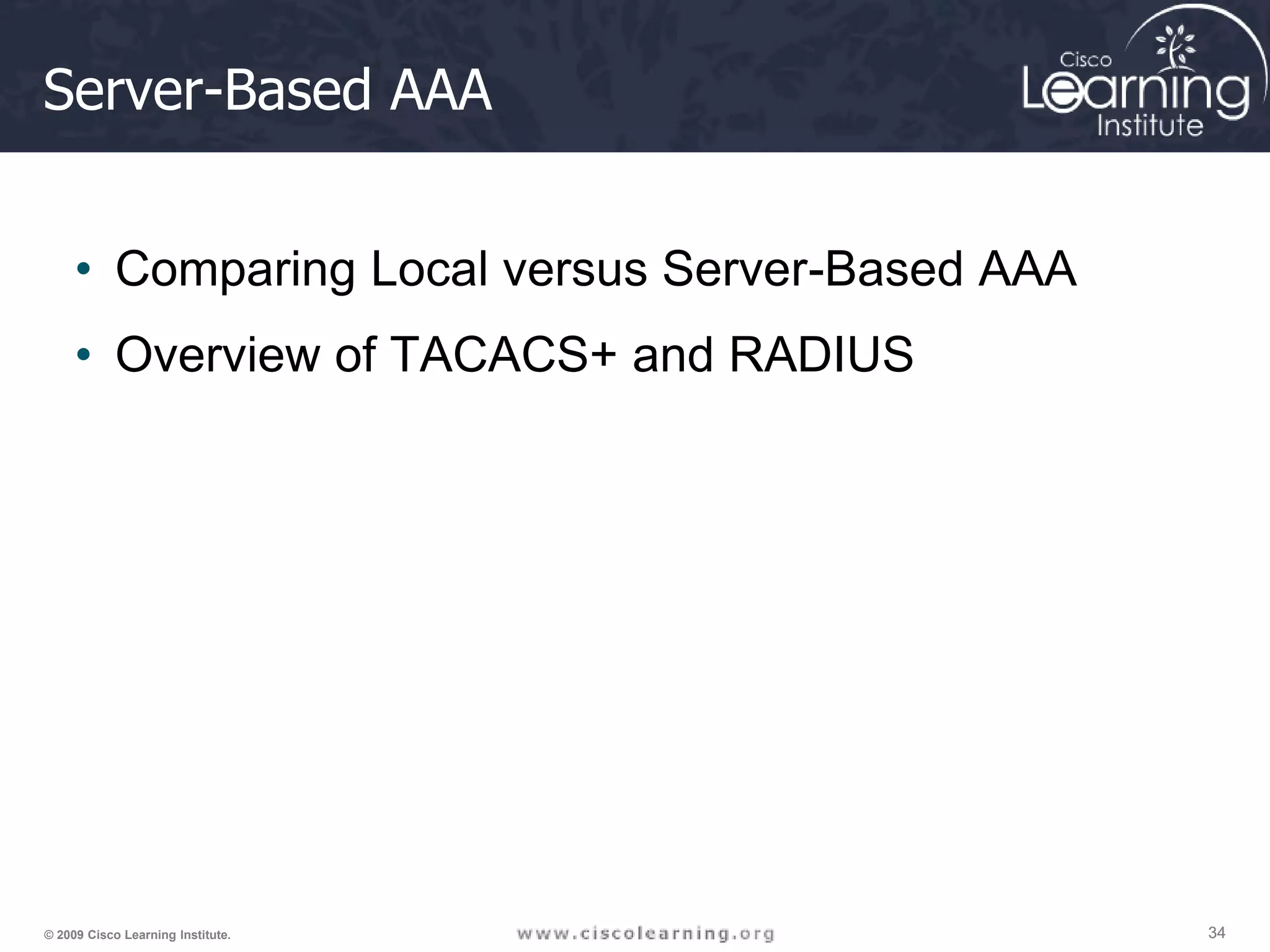


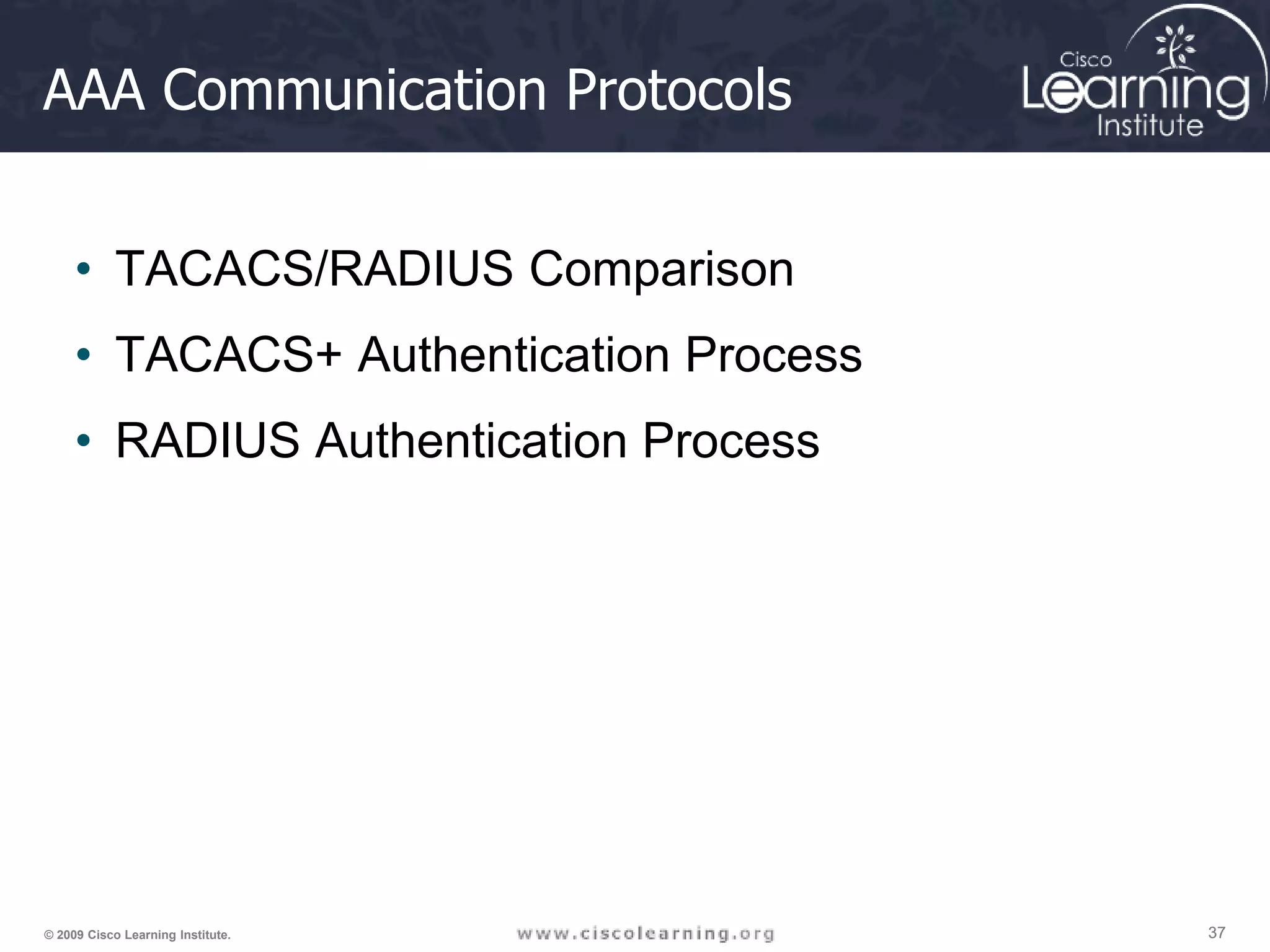
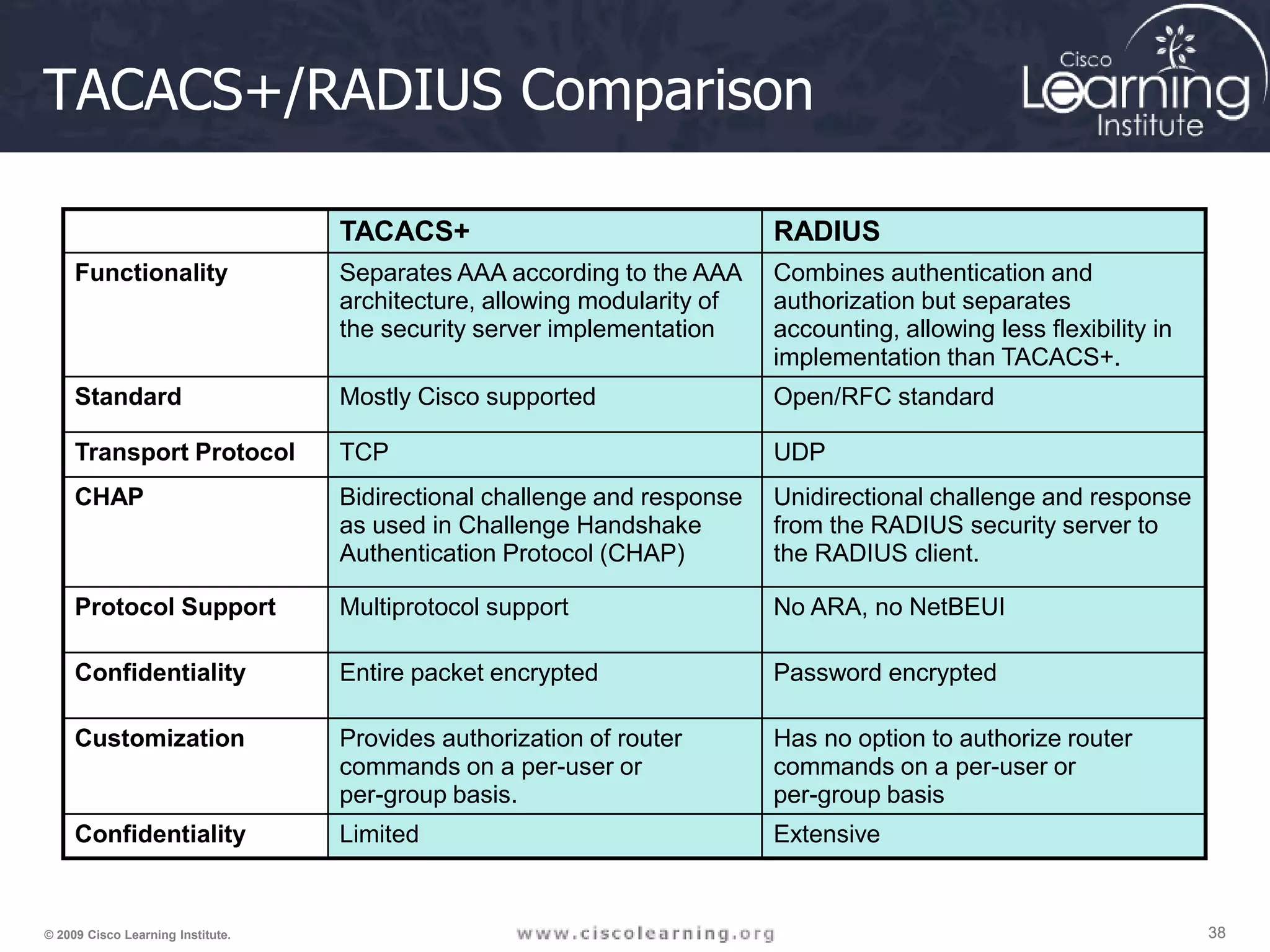
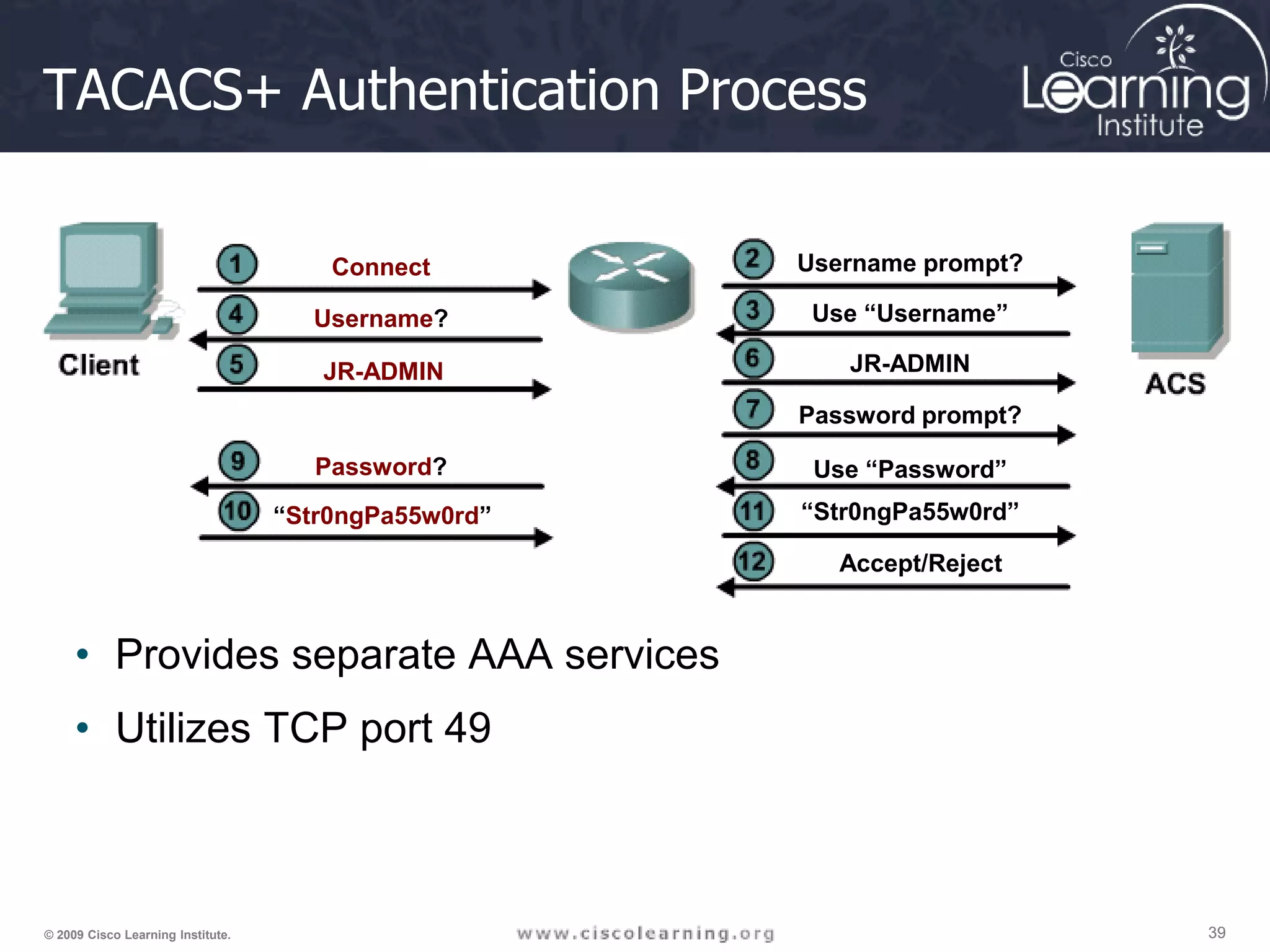
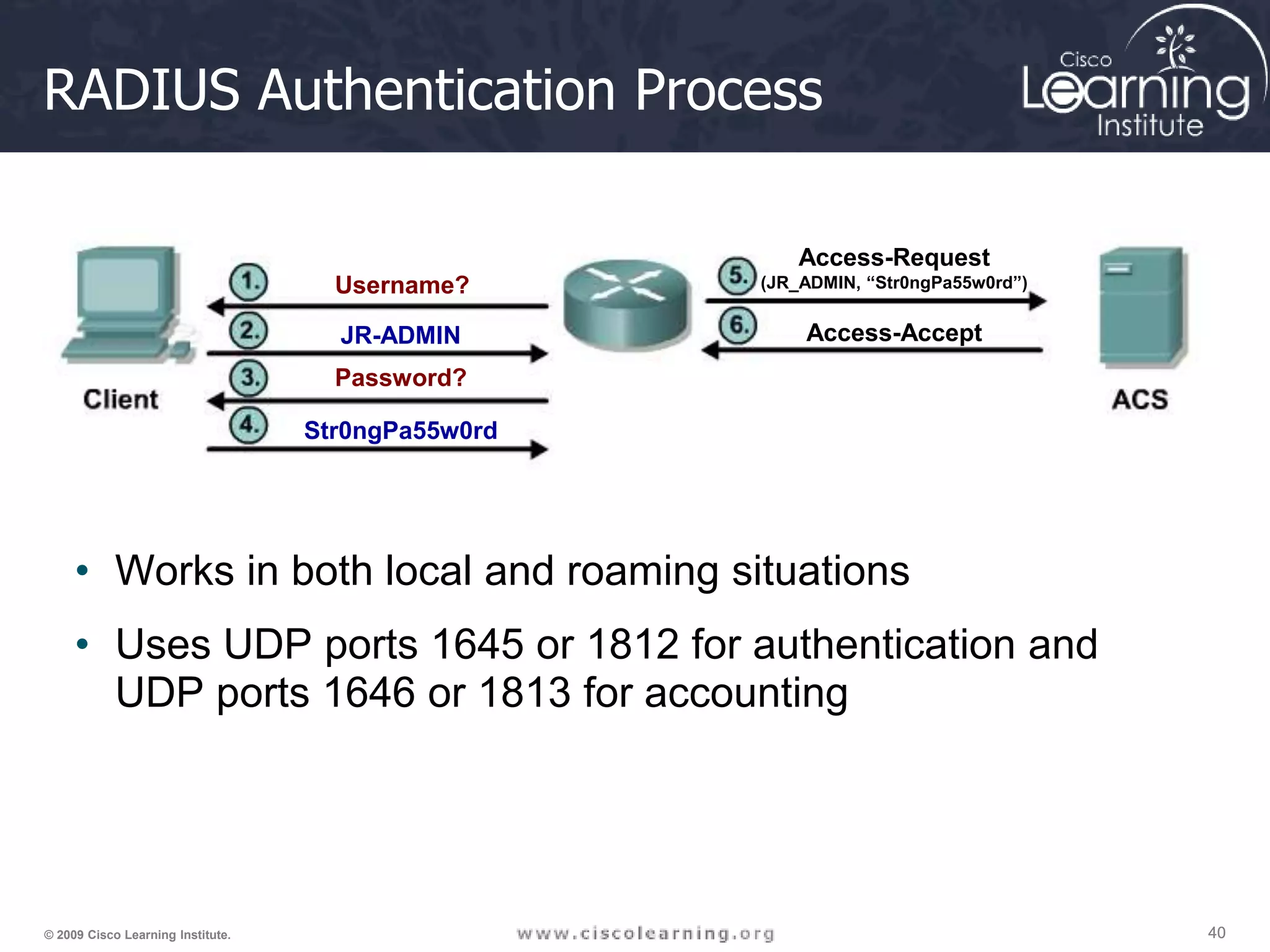

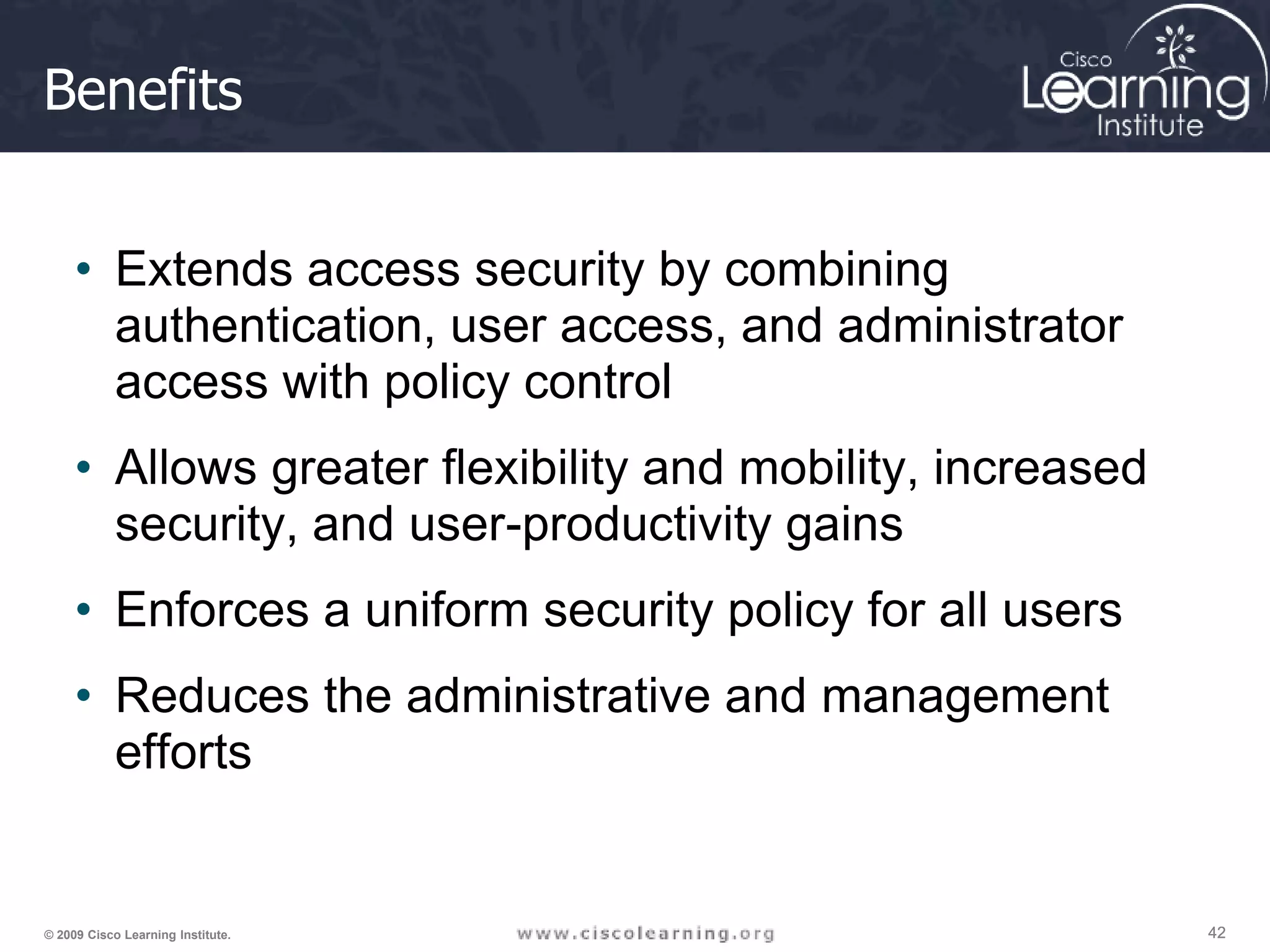
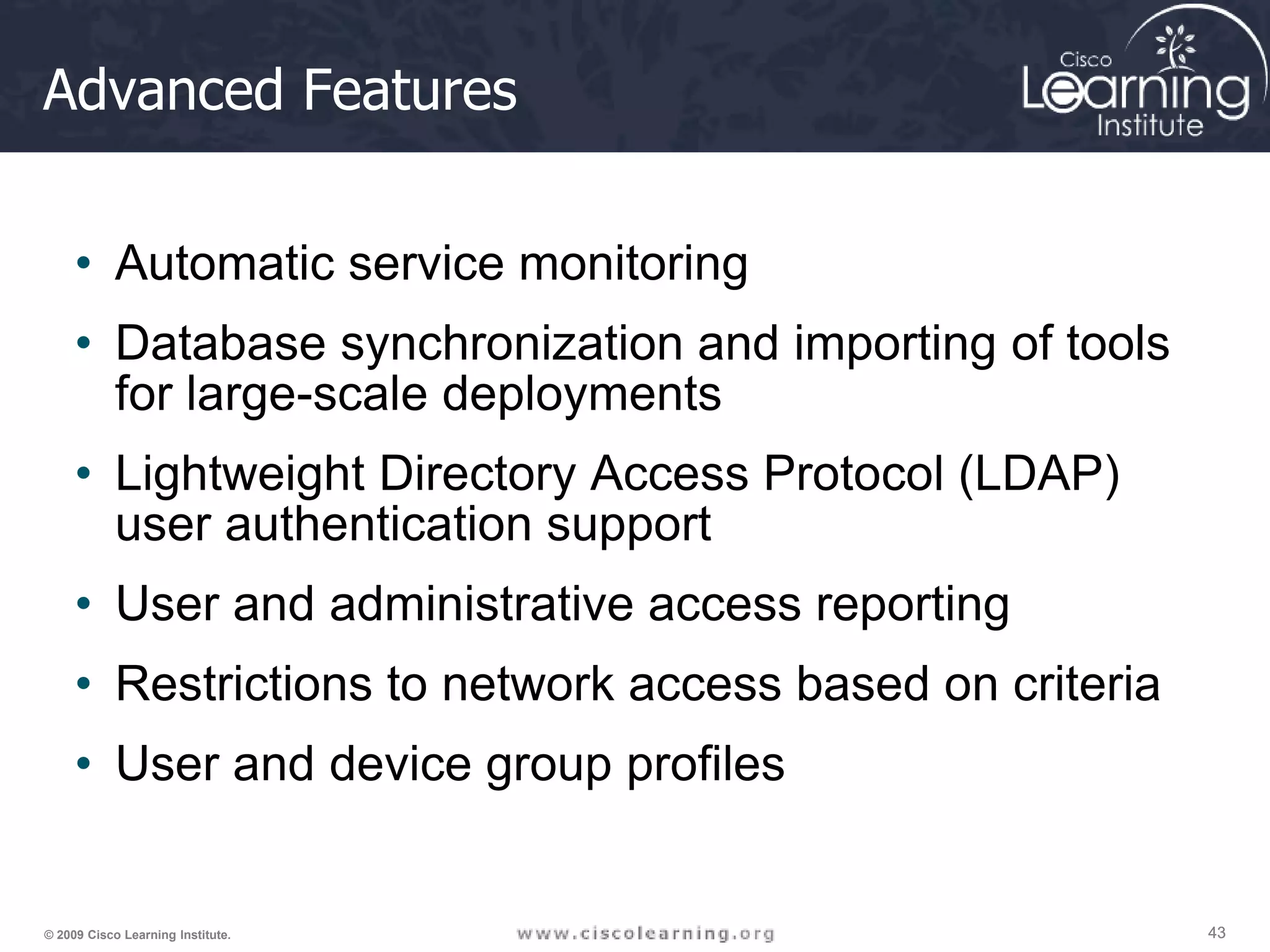
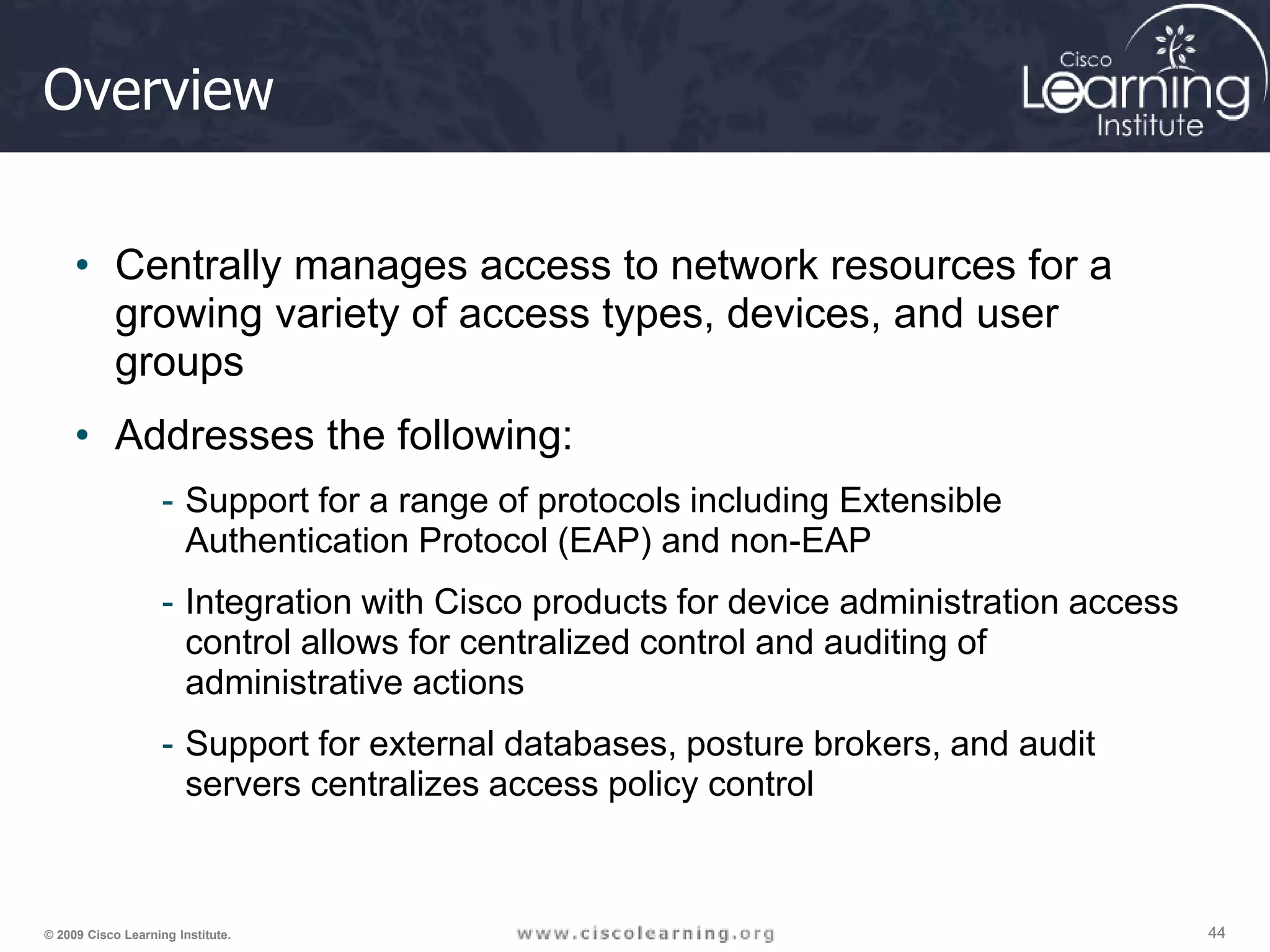
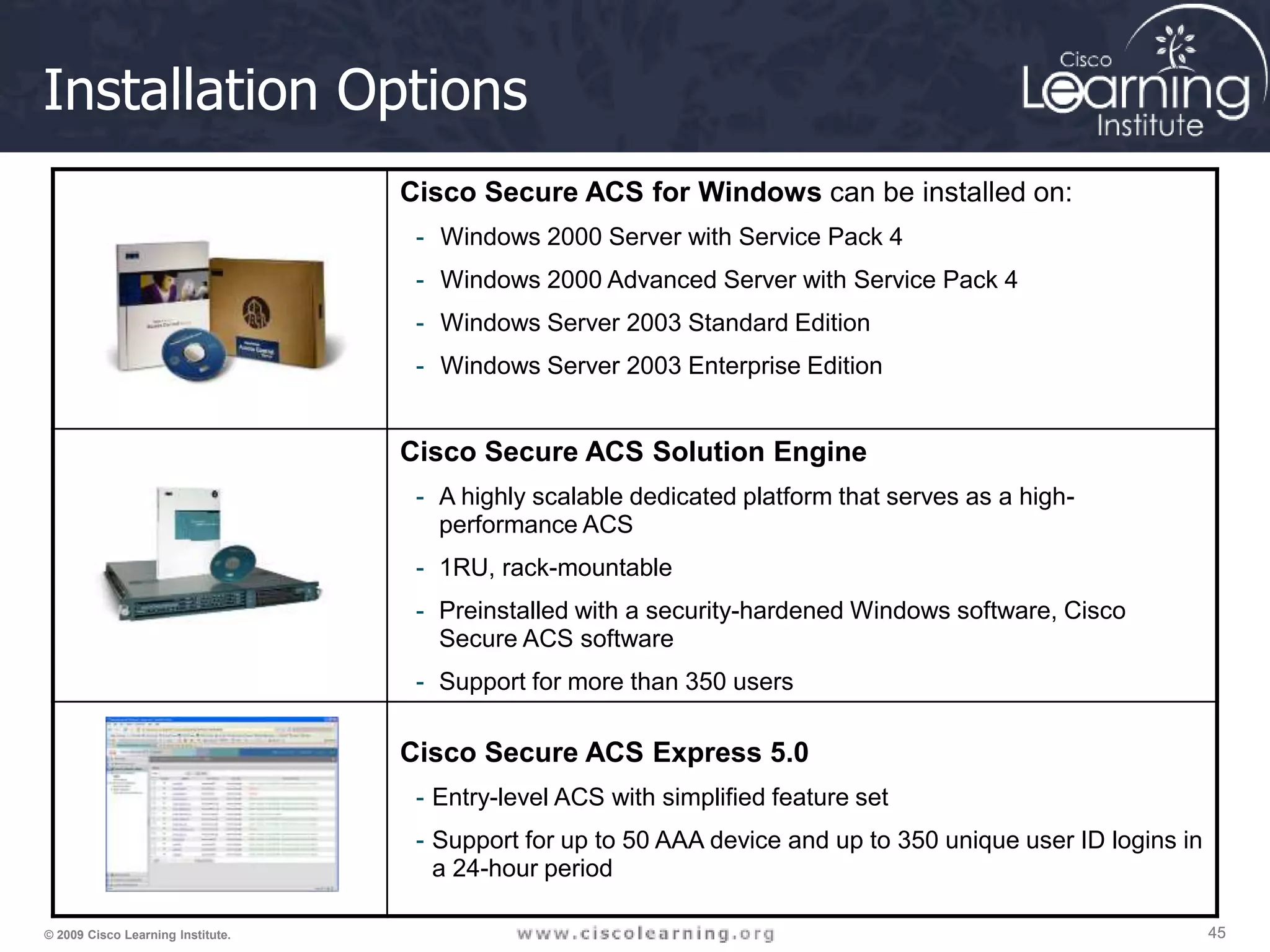
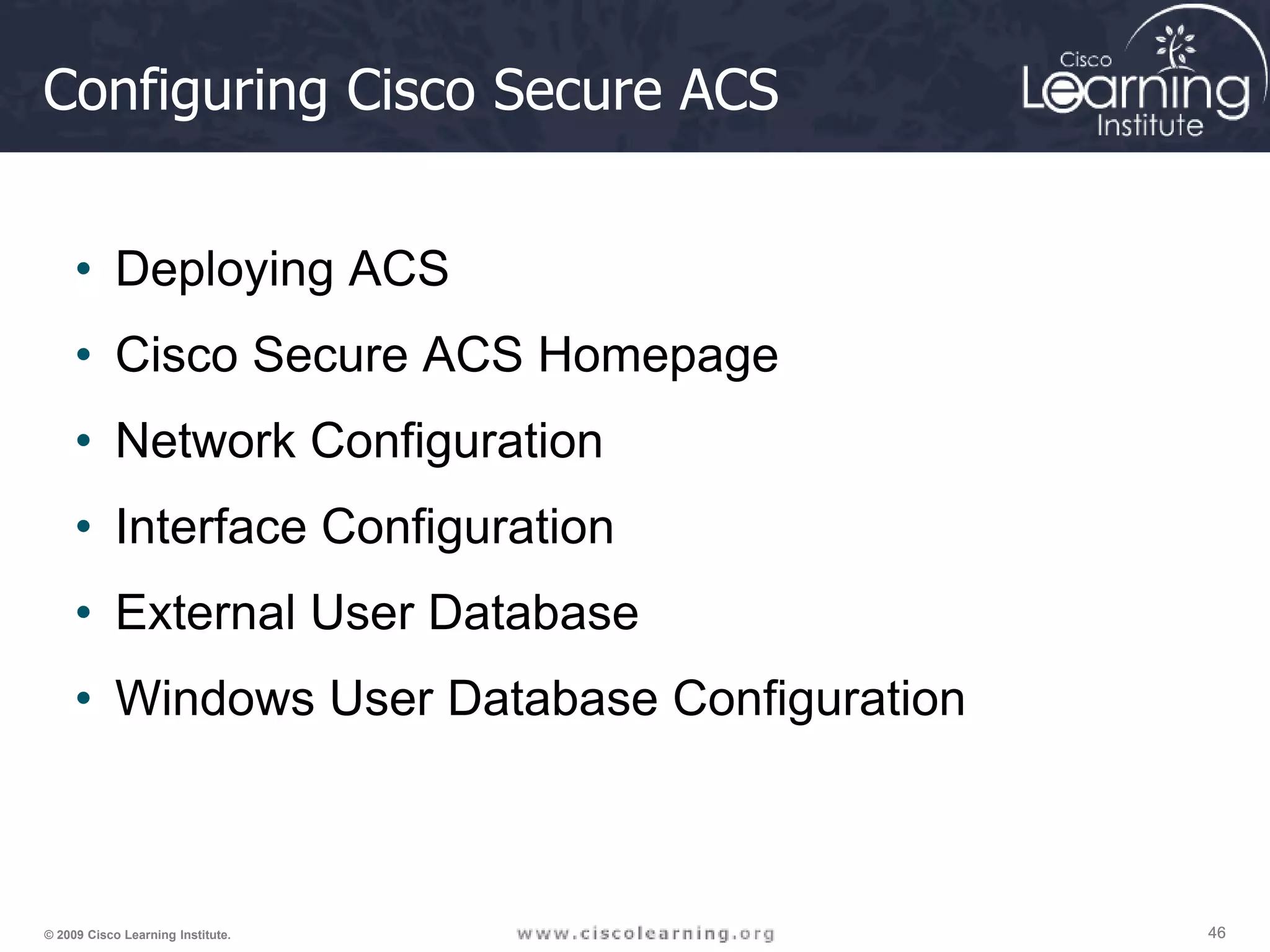

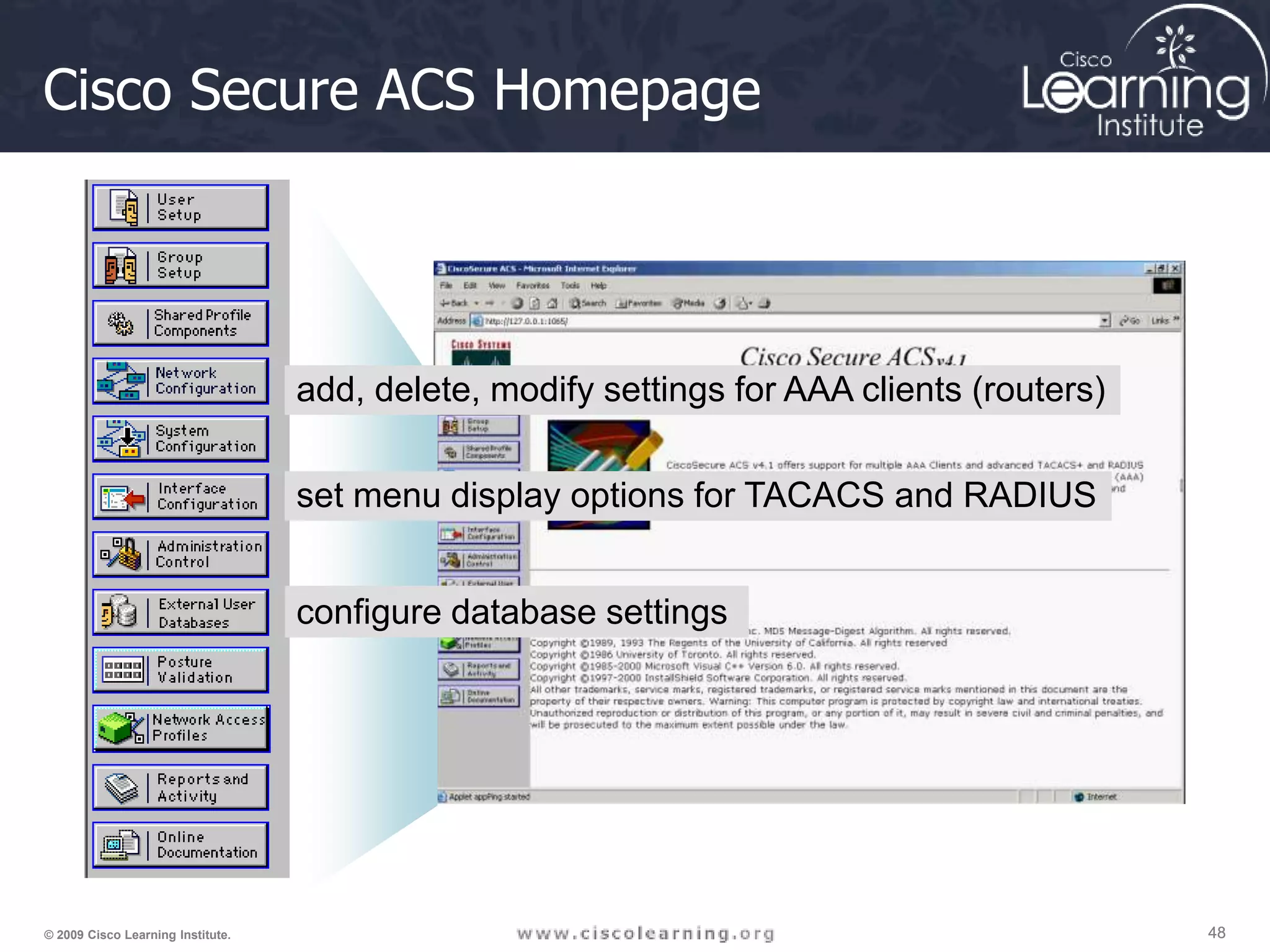
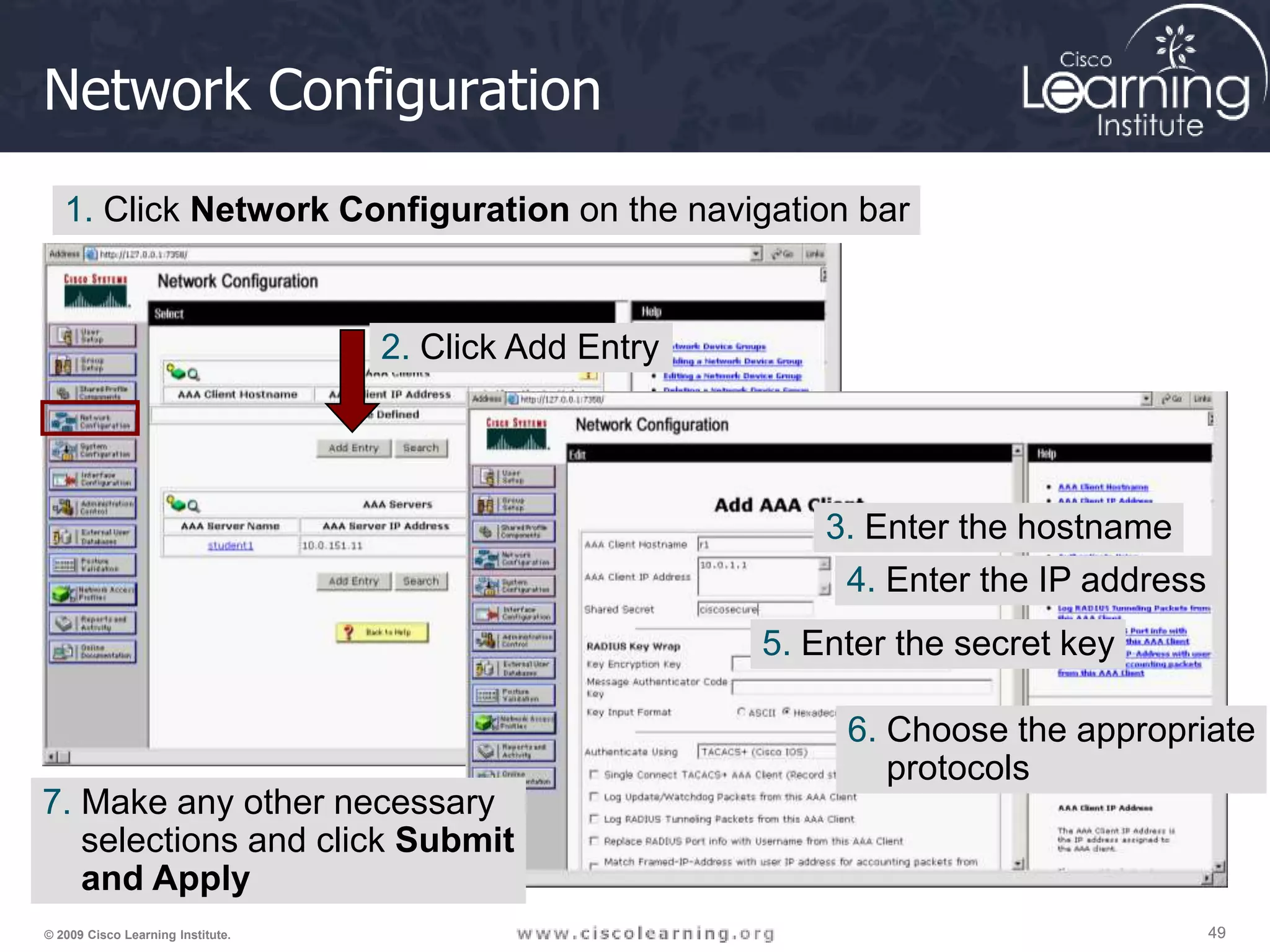
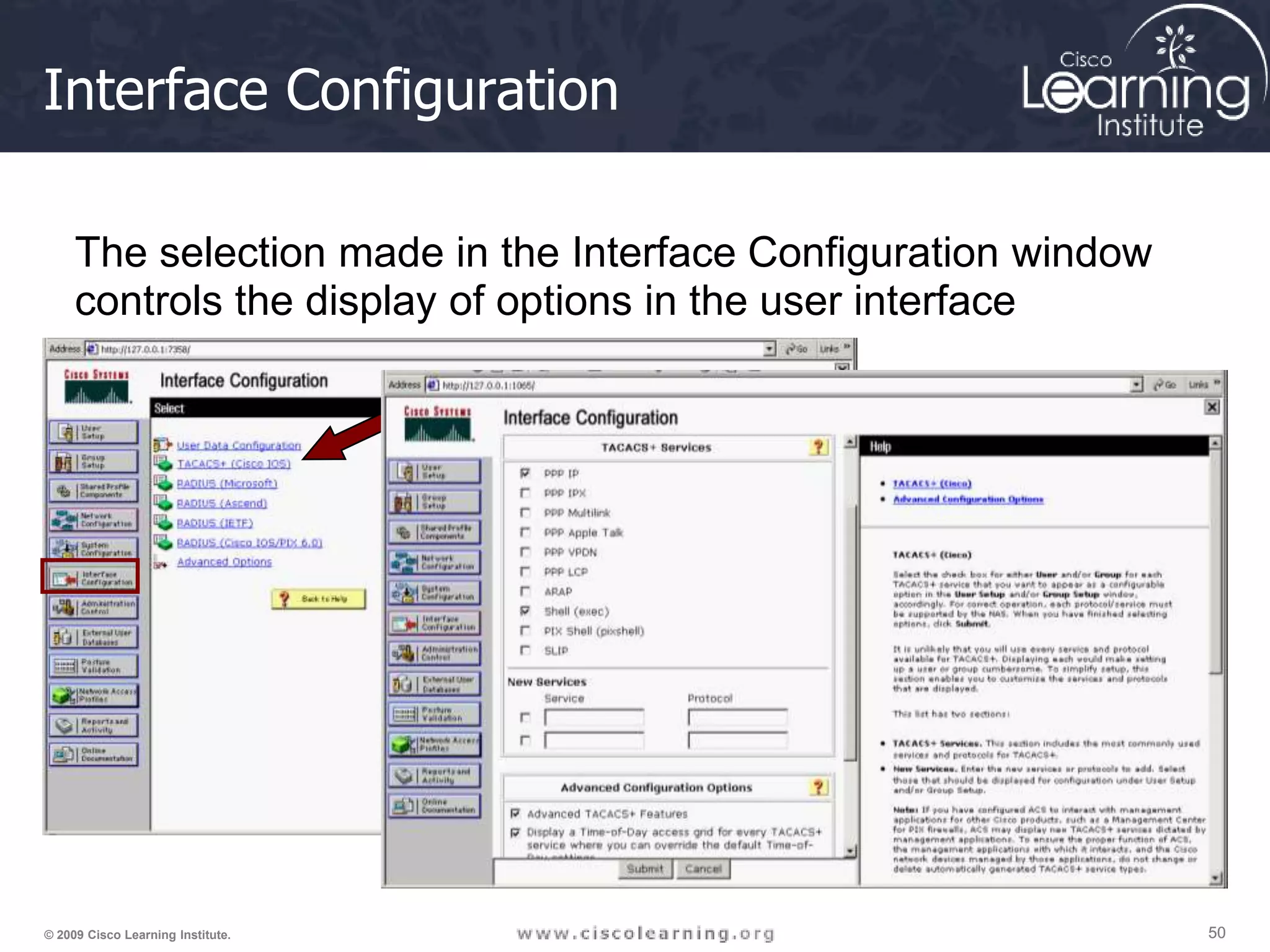


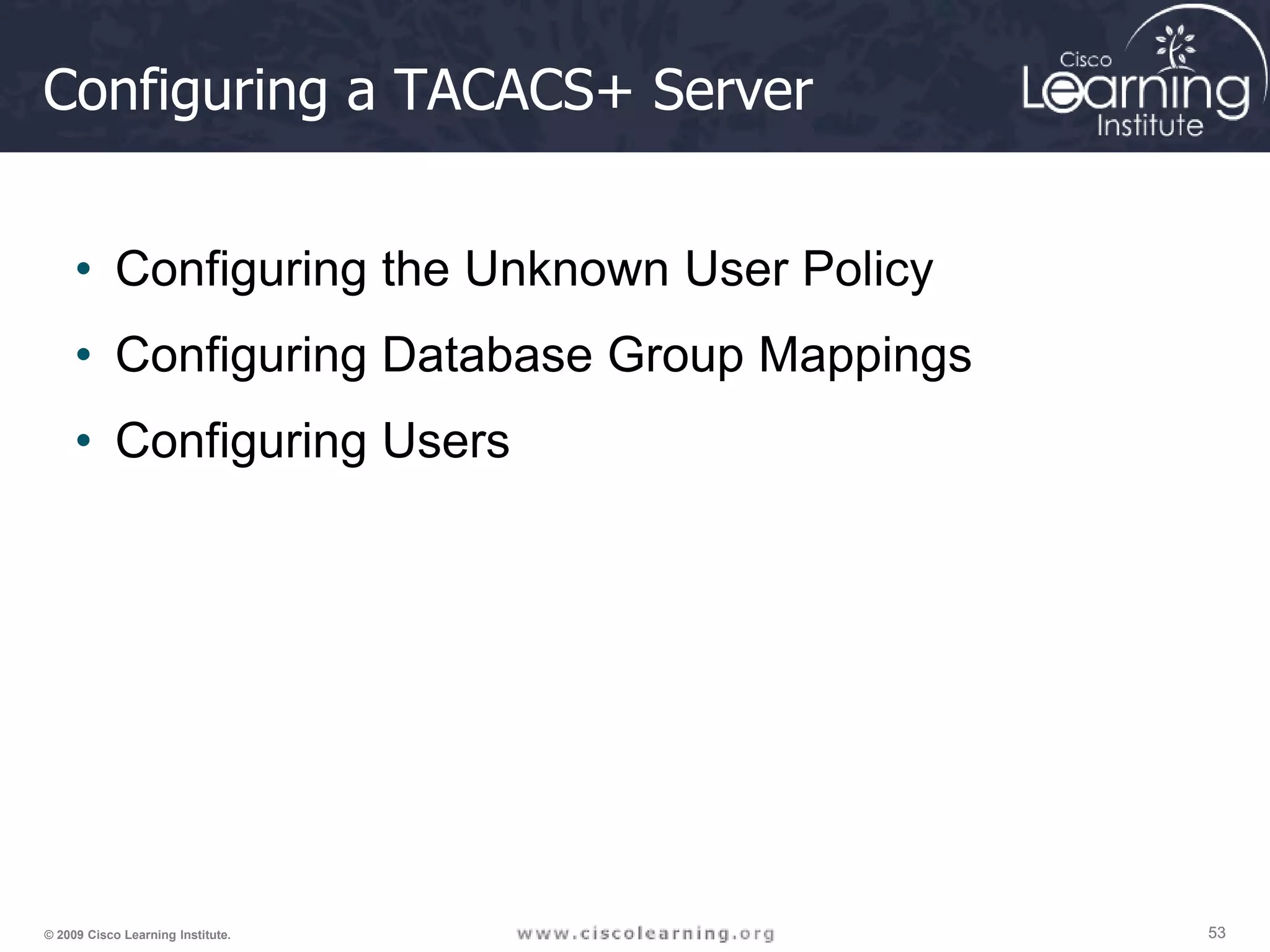
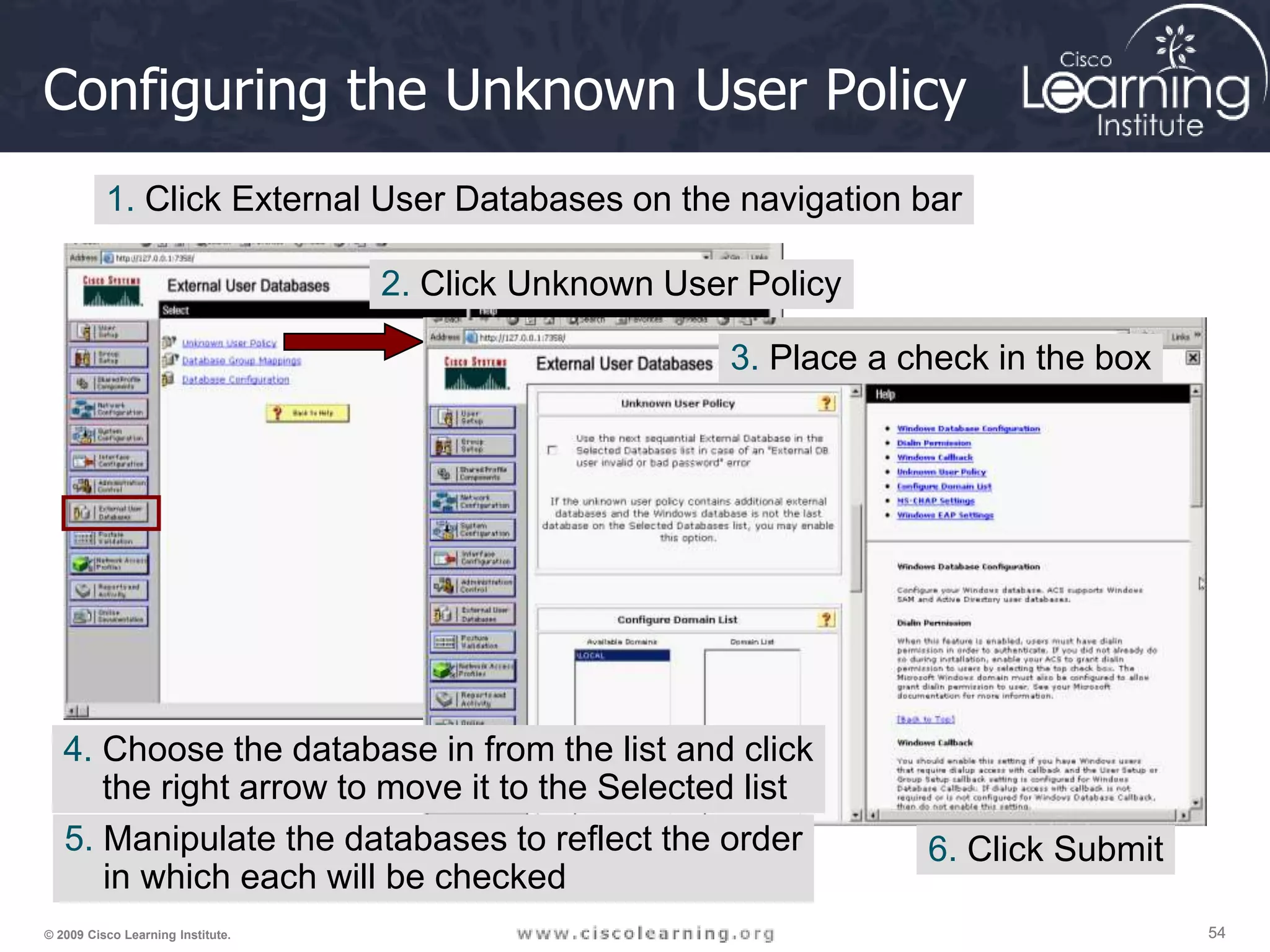
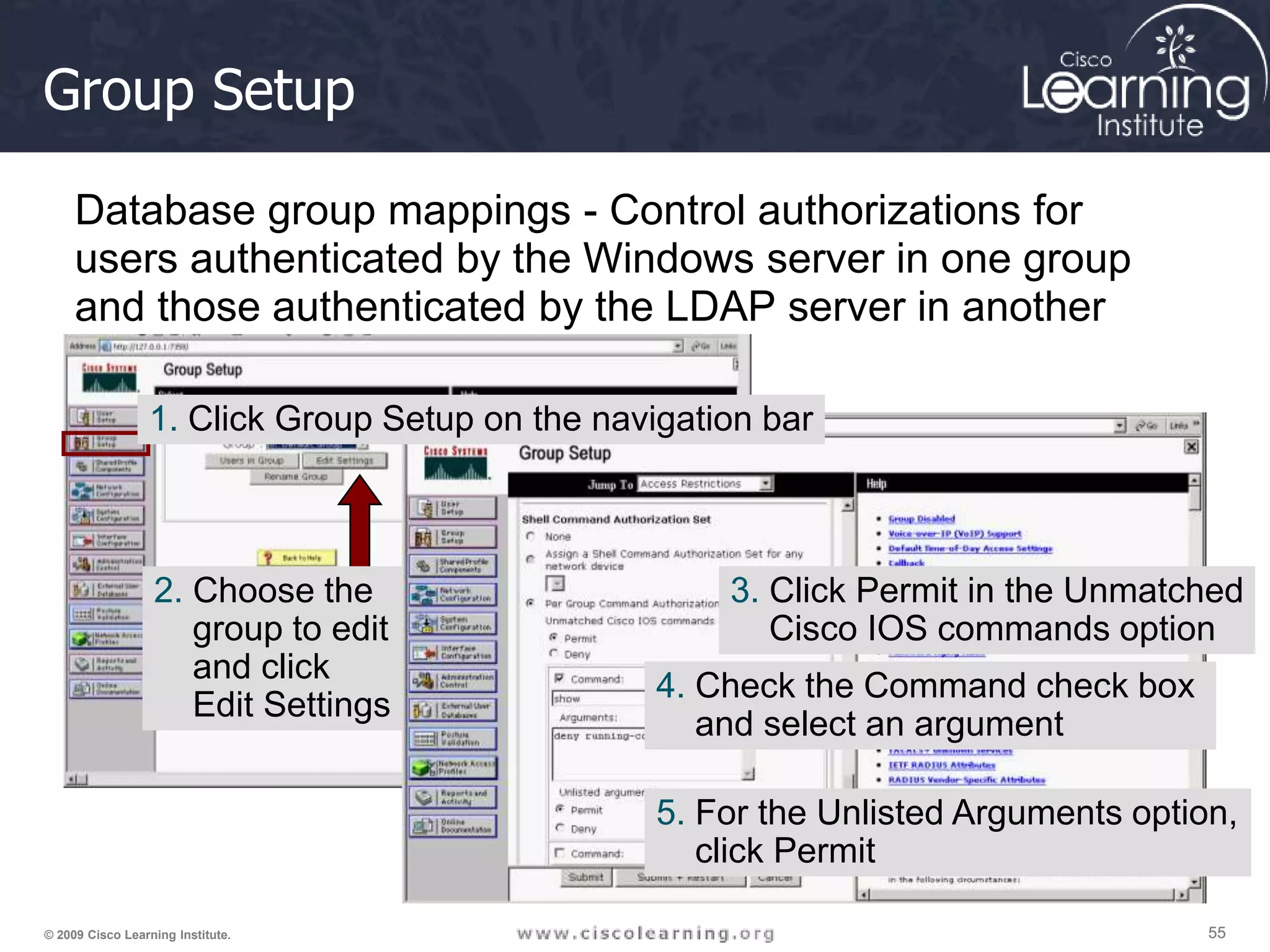
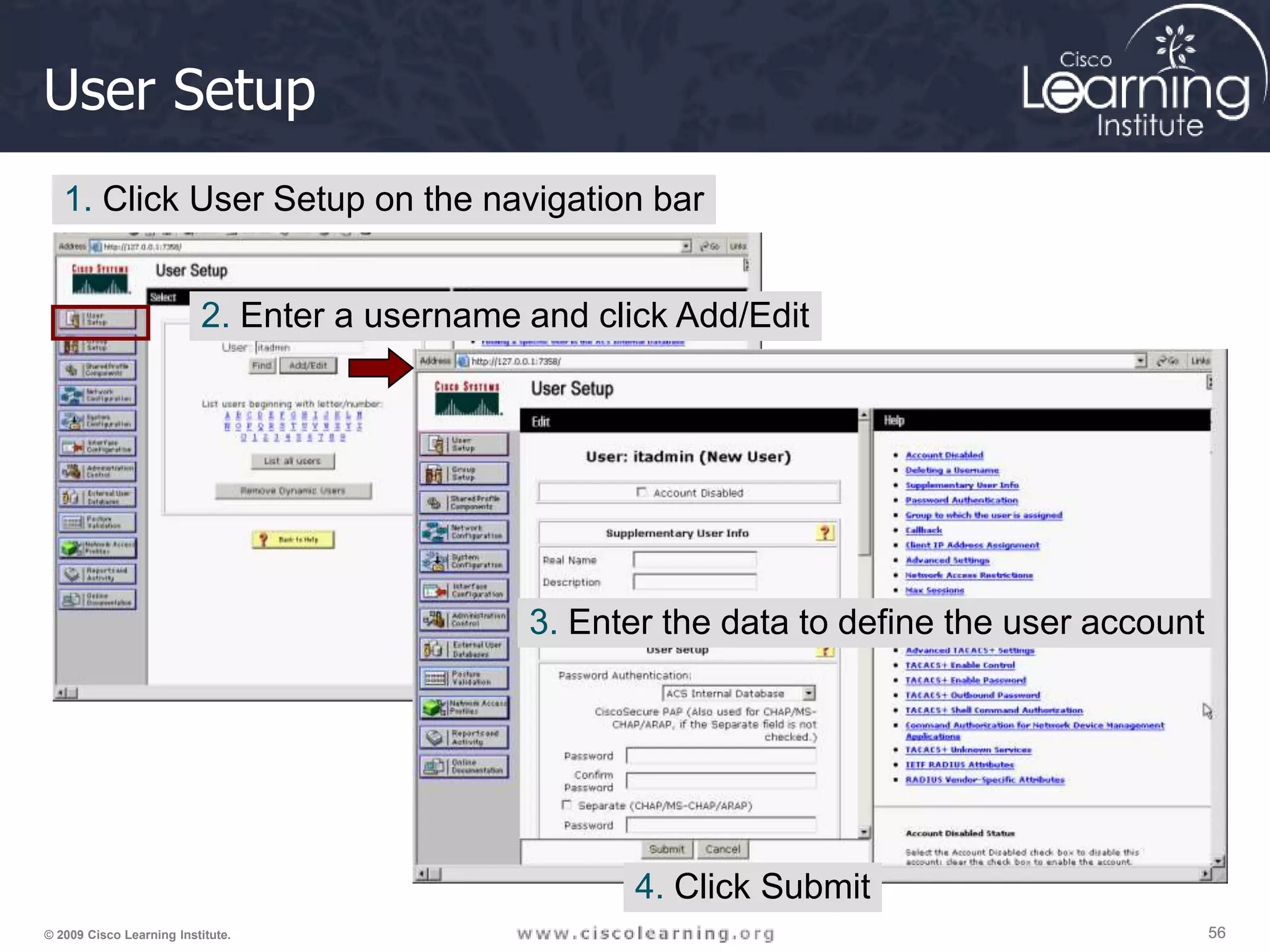
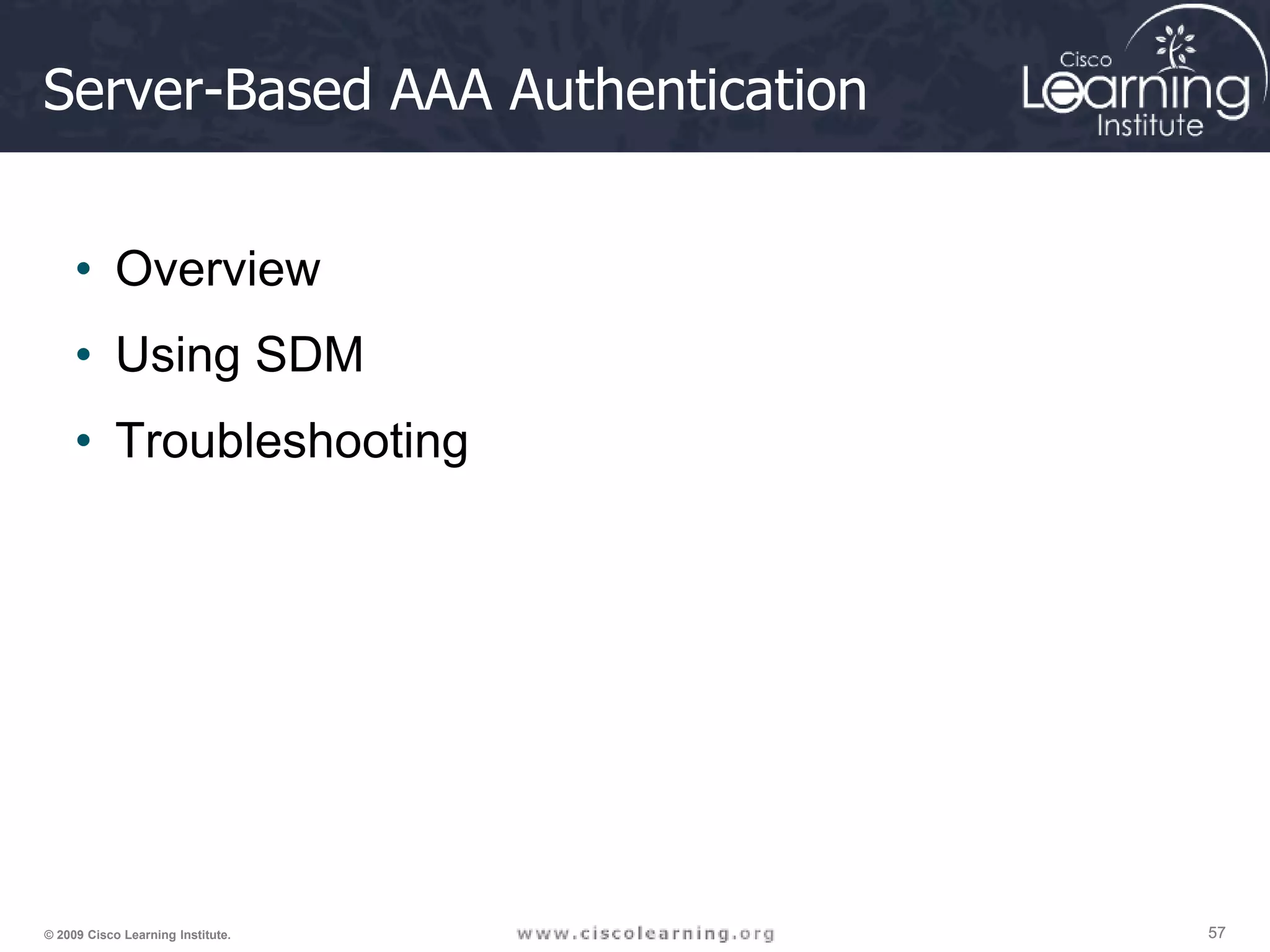
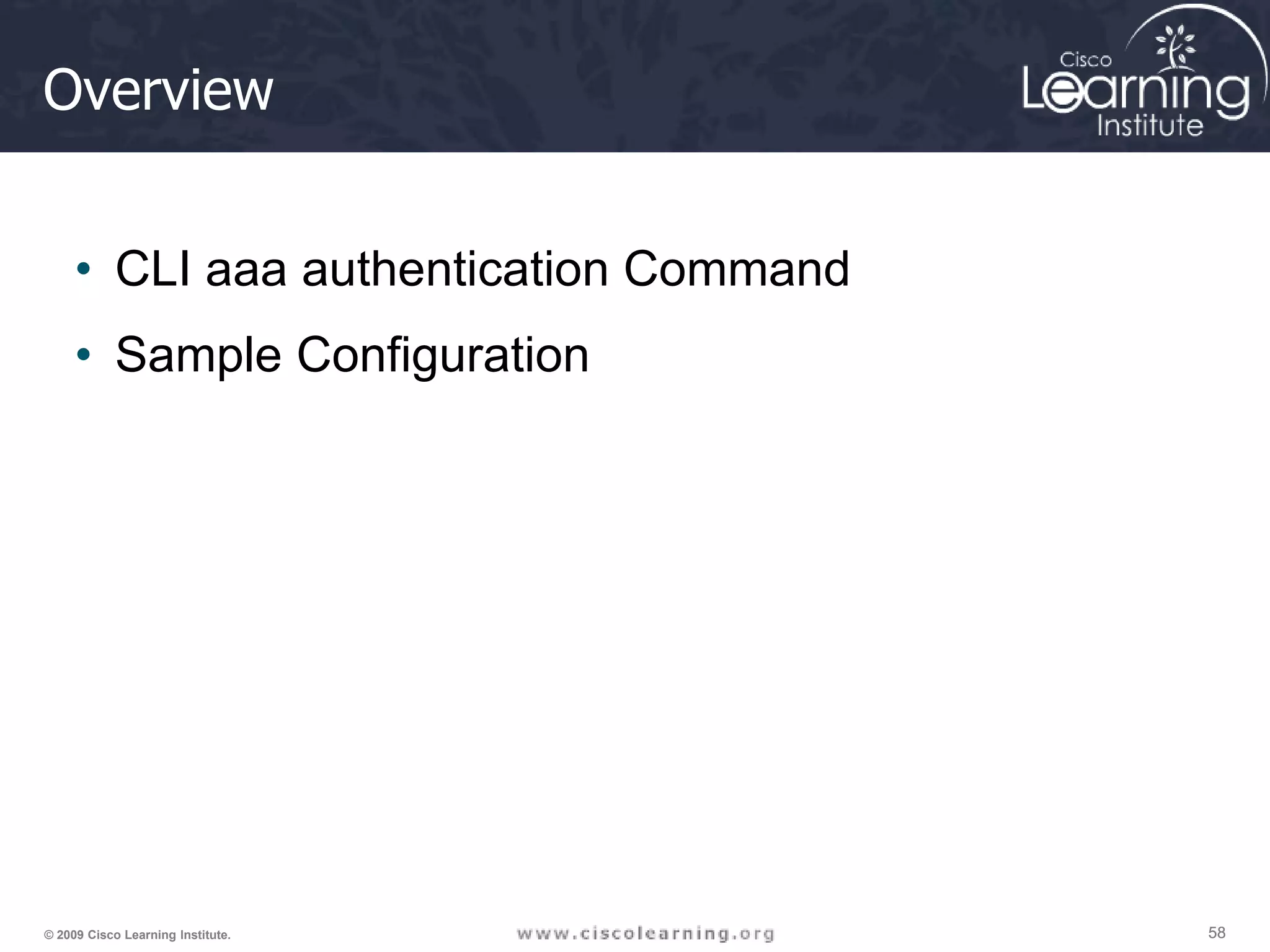
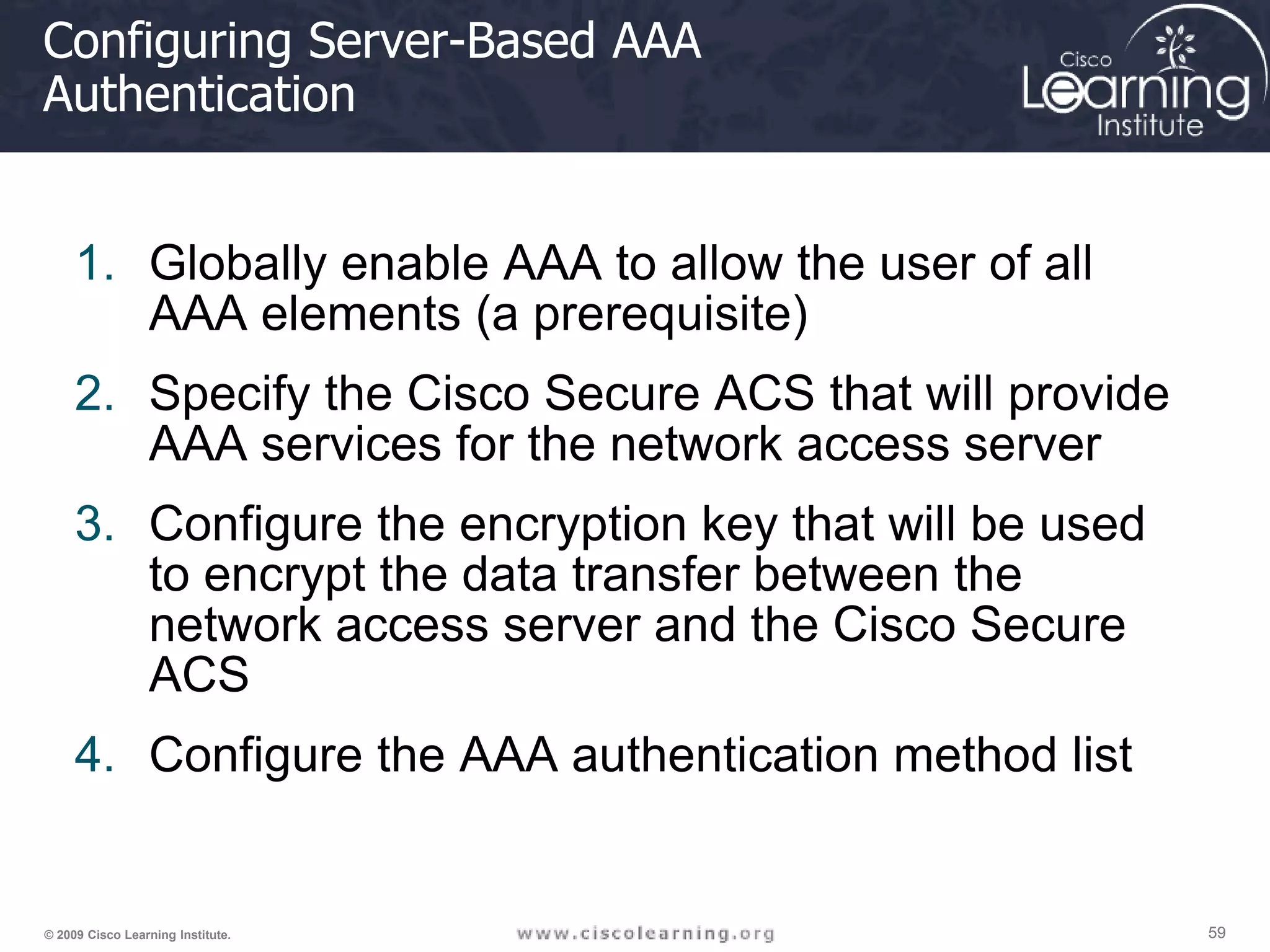
![60 60 60 © 2009 Cisco Learning Institute. aaa authentication Command R1(config)# aaa authentication type { default | list-name } method1 … [method4] R1(config)# aaa authentication login default ? enable Use enable password for authentication. group Use Server-group krb5 Use Kerberos 5 authentication. krb5-telnet Allow logins only if already authenticated via Kerberos V Telnet. line Use line password for authentication. local Use local username authentication. local-case Use case-sensitive local username authentication. none NO authentication. passwd-expiry enable the login list to provide password aging support R1(config)# aaa authentication login default group ? WORD Server-group name radius Use list of all Radius hosts. tacacs+ Use list of all Tacacs+ hosts. R1(config)# aaa authentication login default group](https://image.slidesharecdn.com/ccnasecurity03-221023231315-844f5238/75/CCNA_Security_03-ppt-60-2048.jpg)

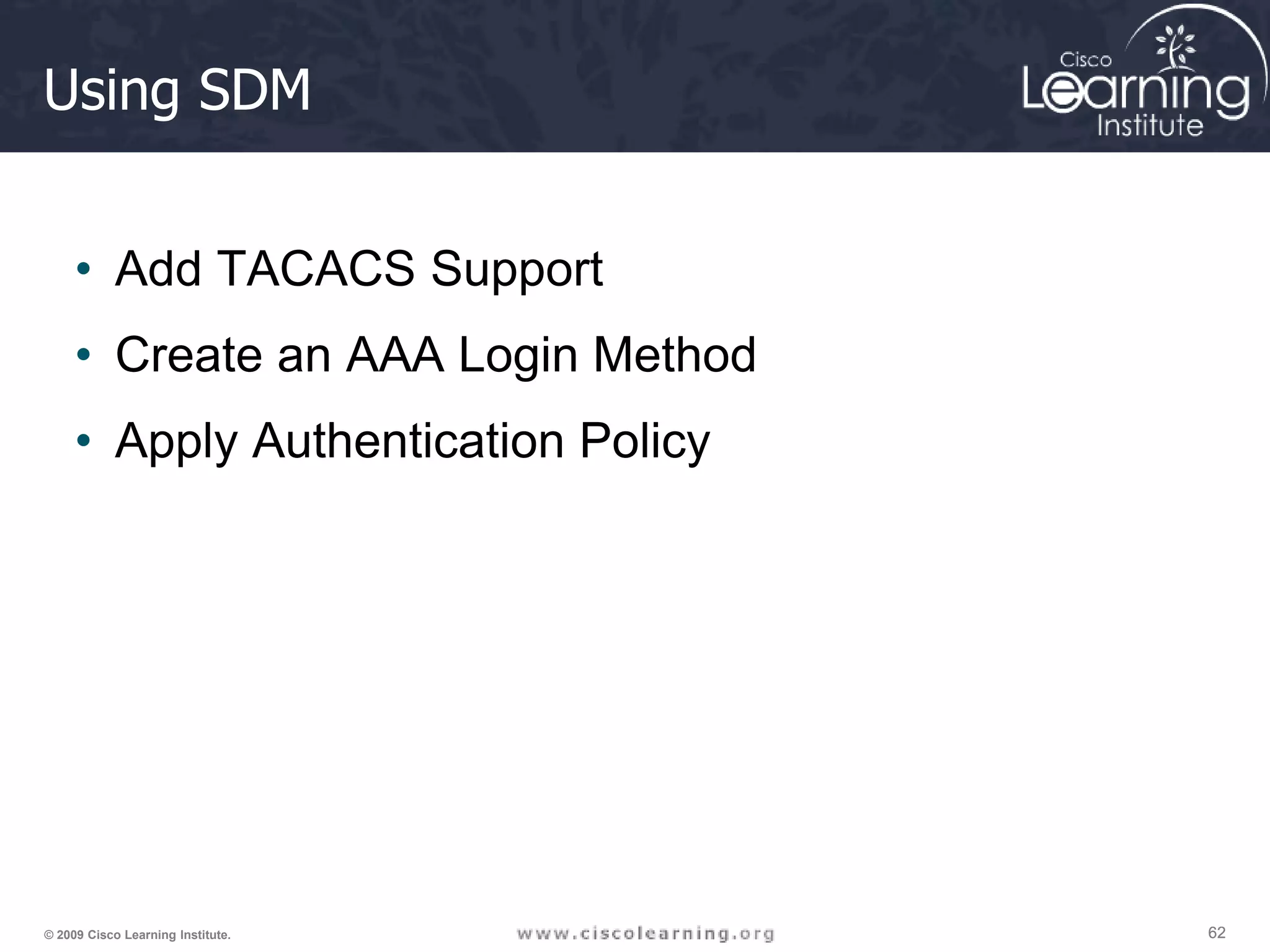

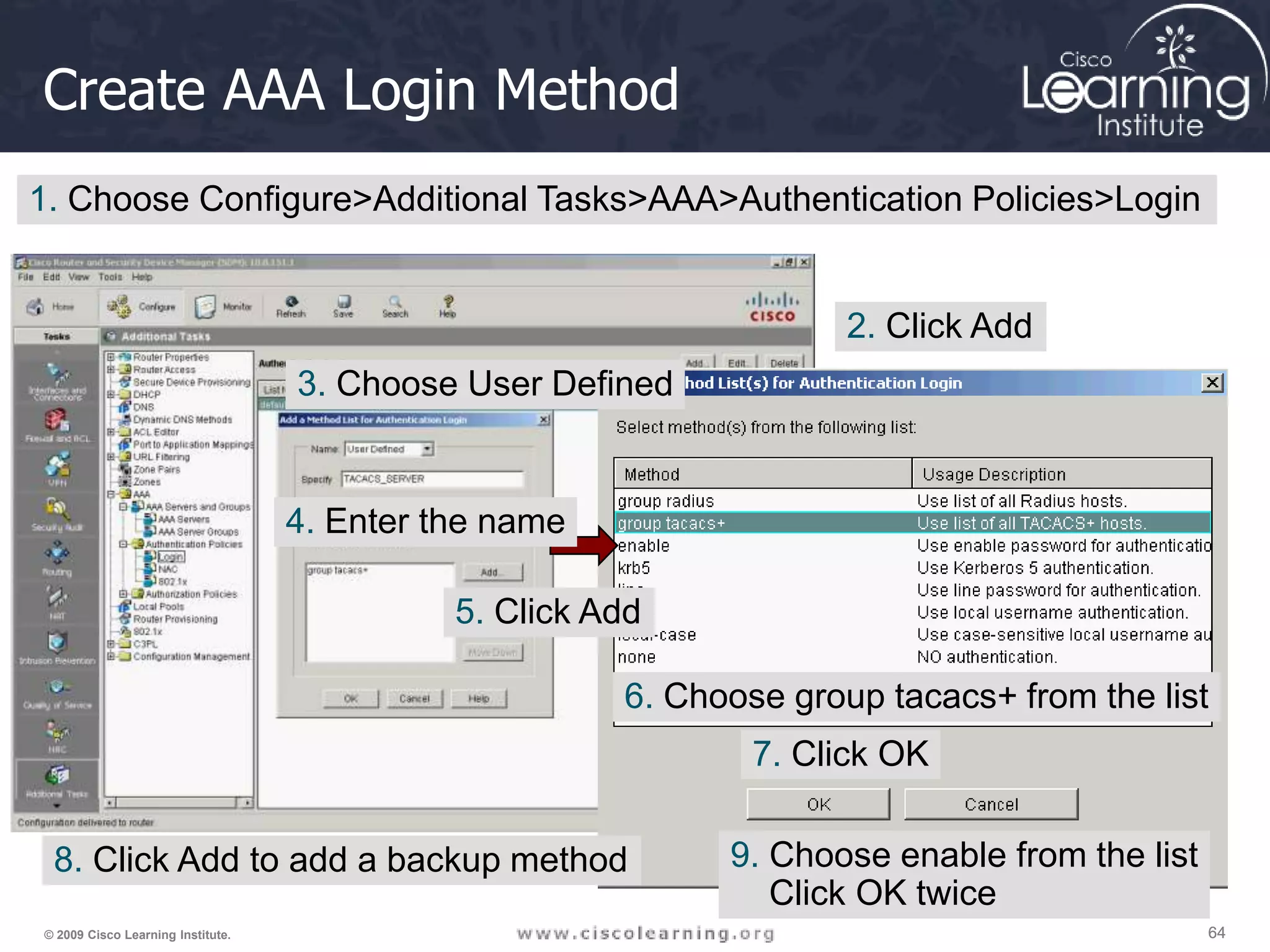
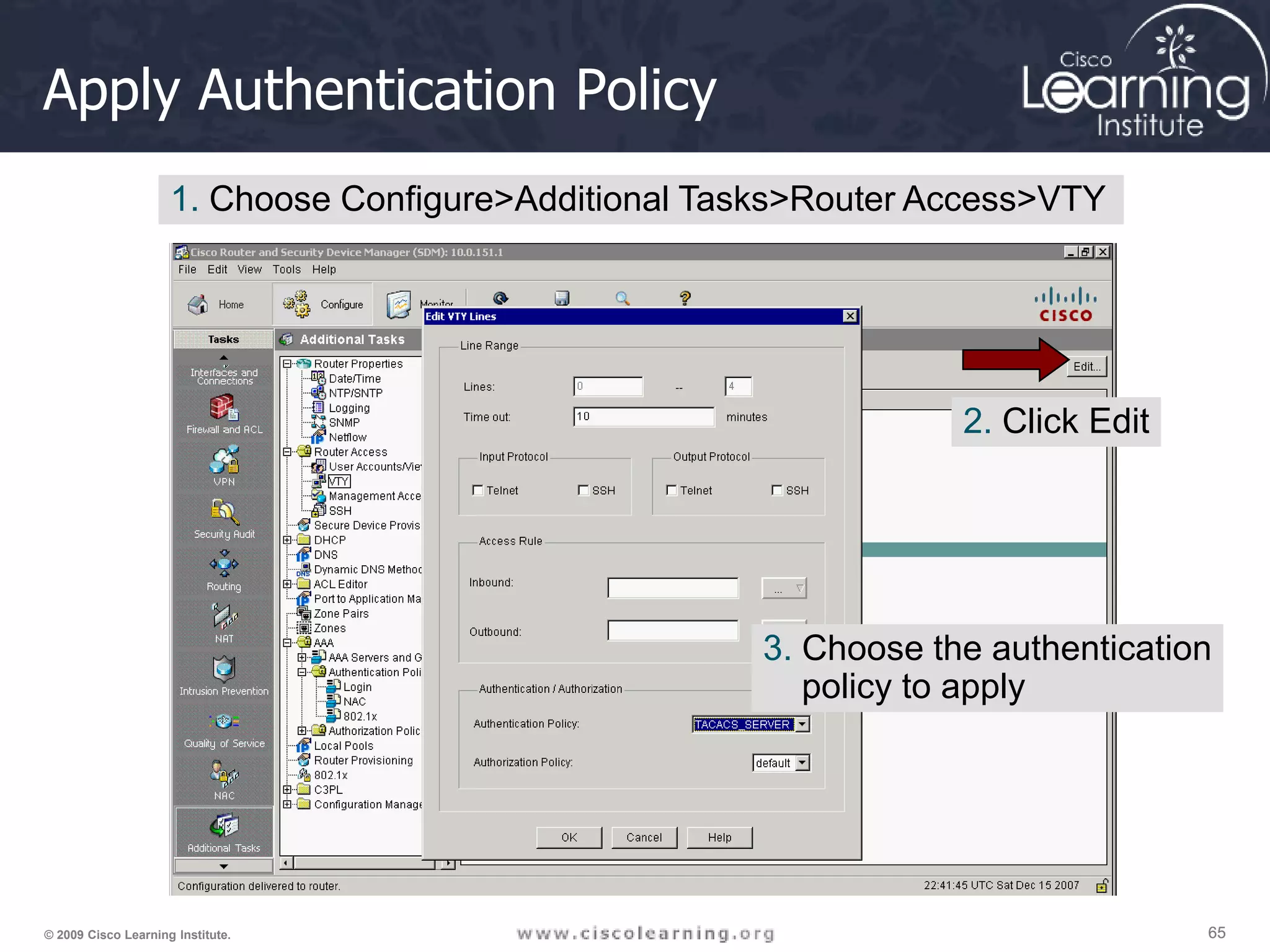

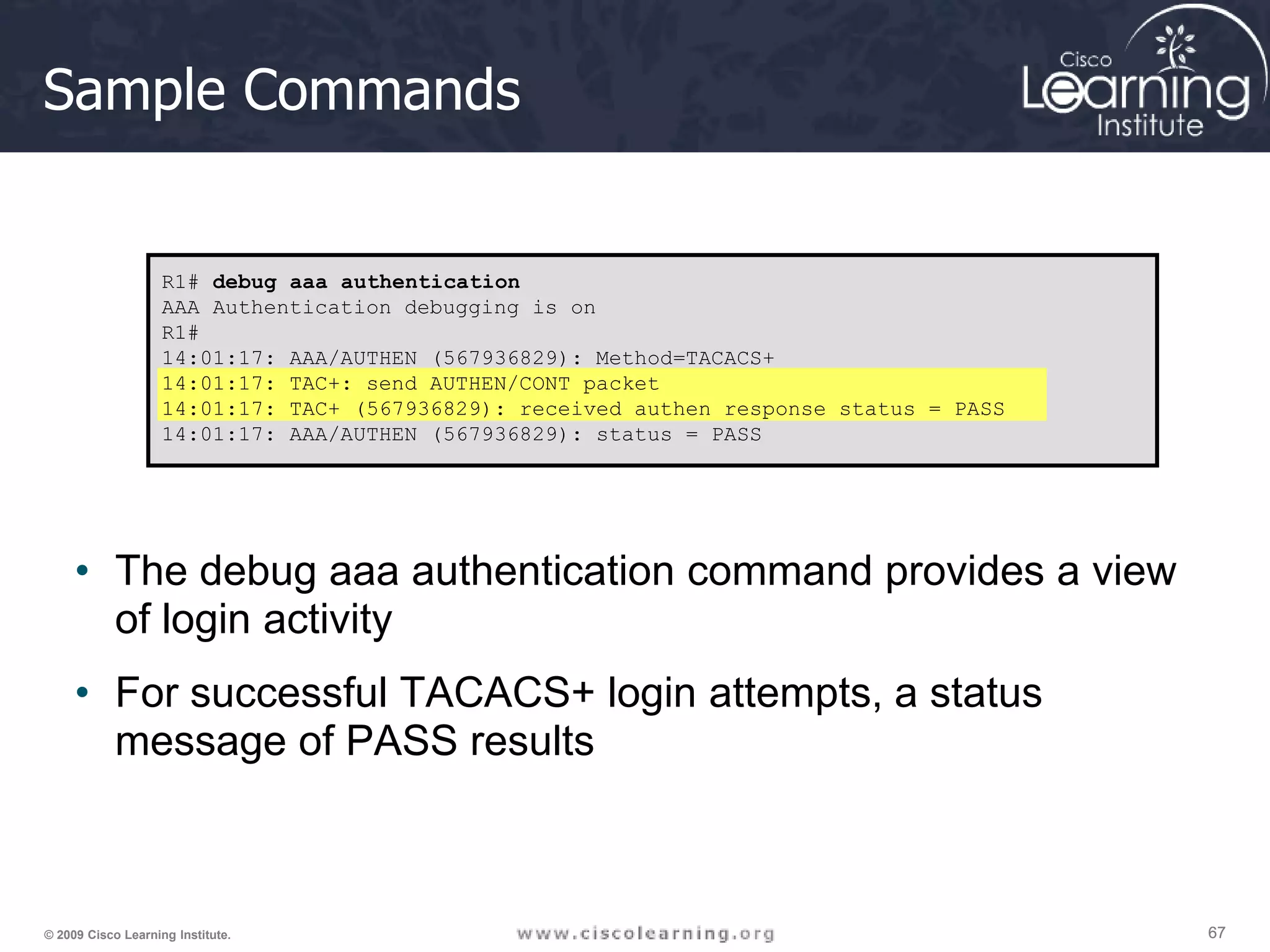

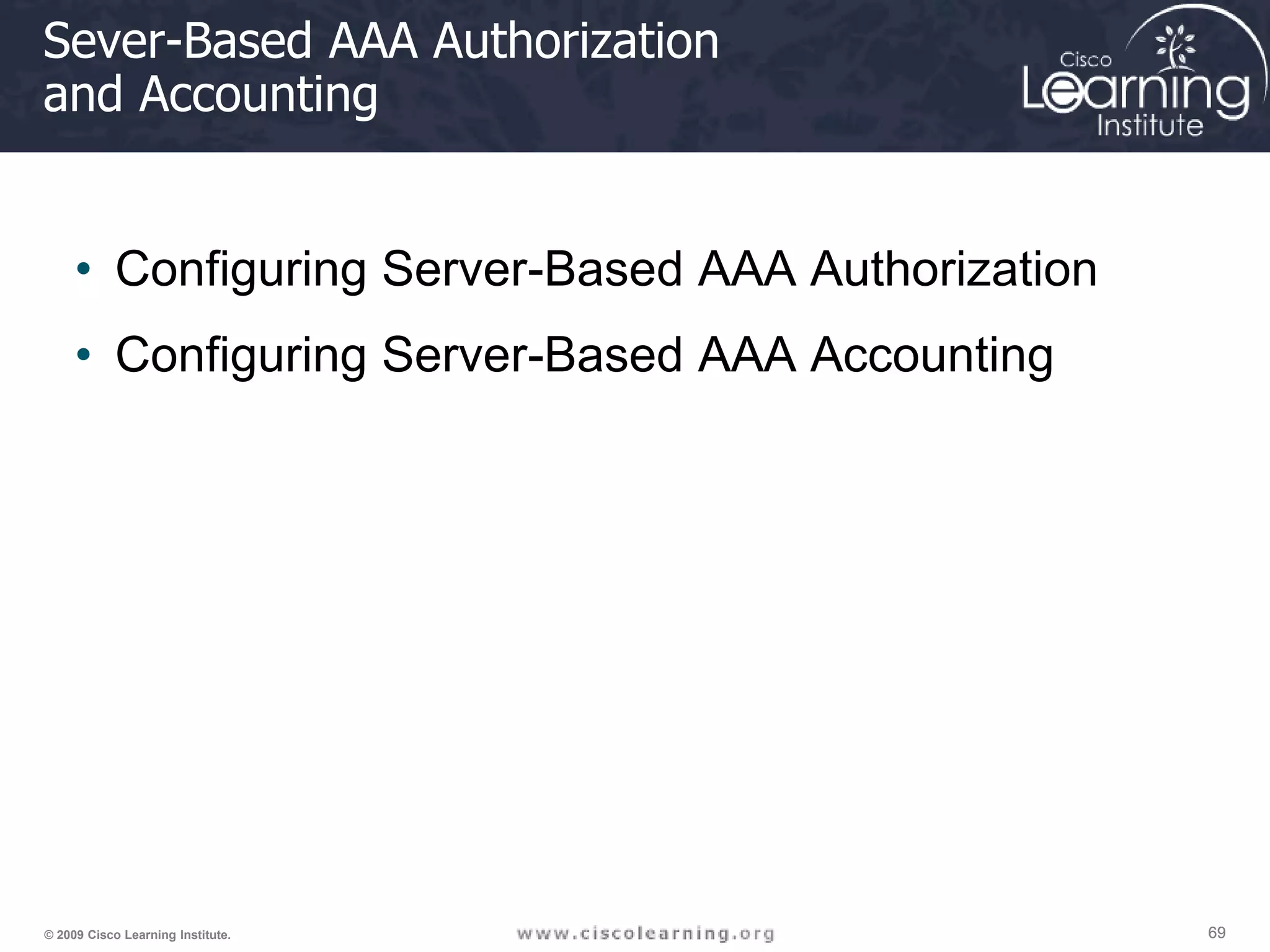
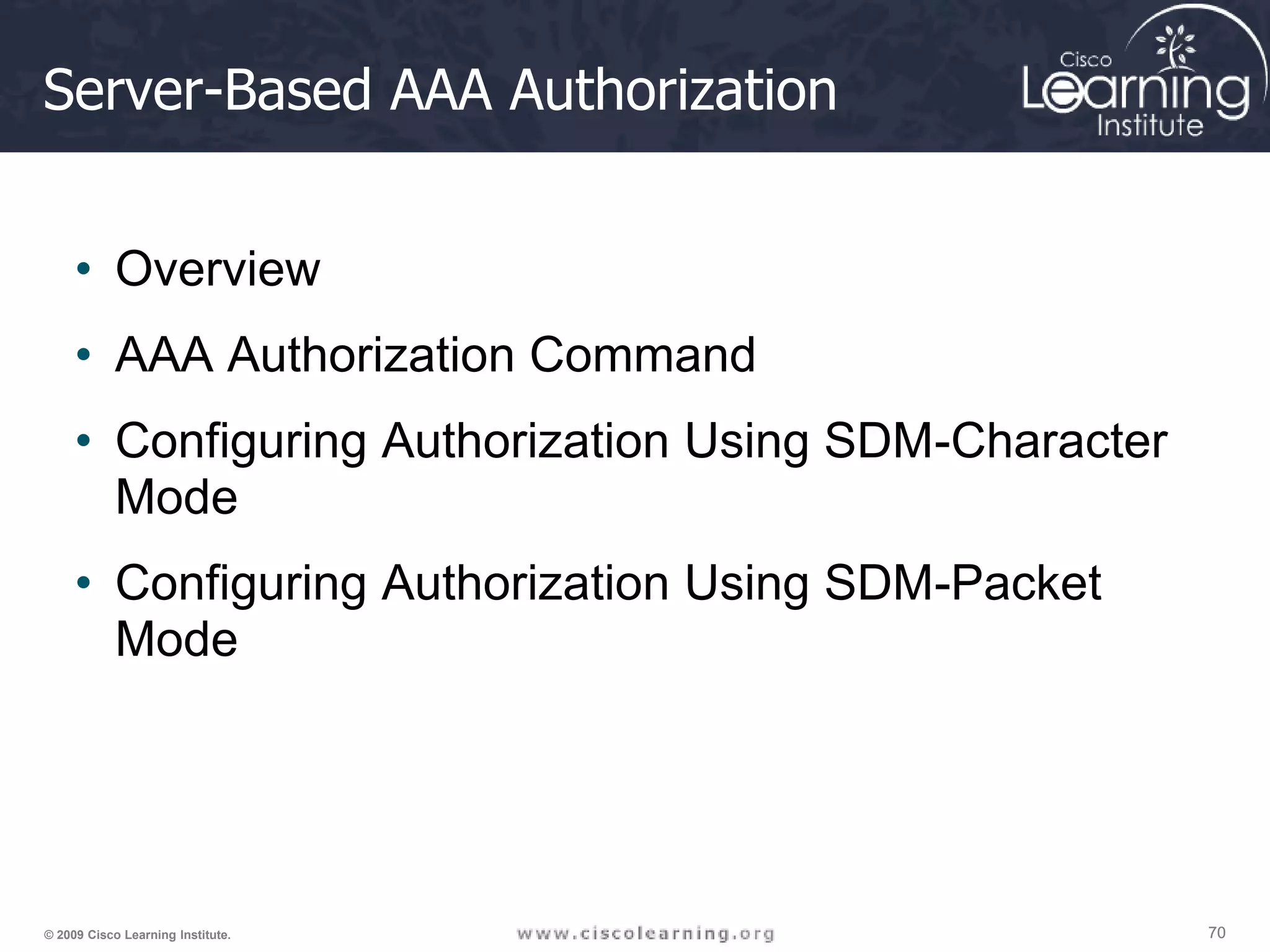
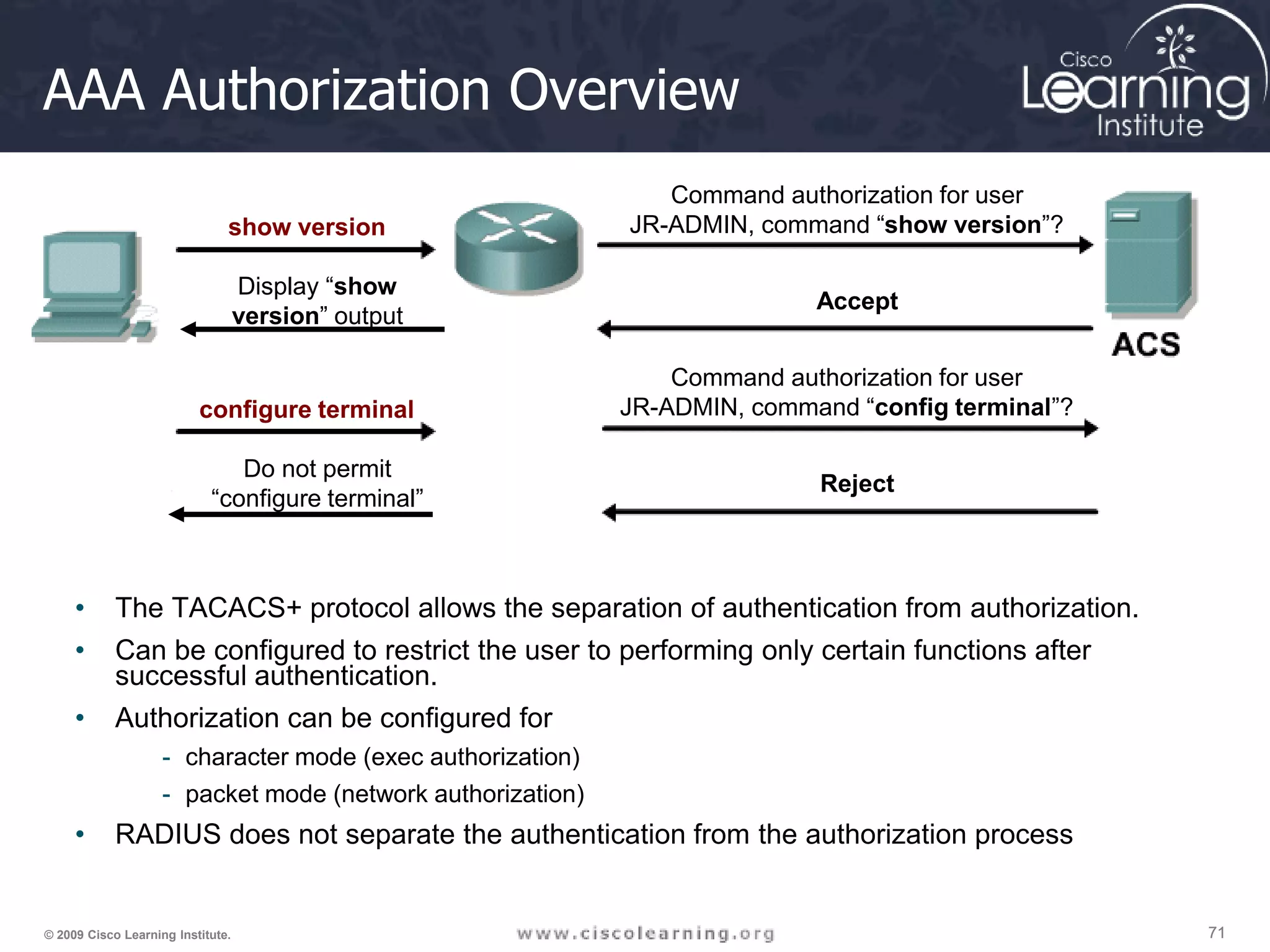
![72 72 72 © 2009 Cisco Learning Institute. AAA Authorization Commands • To configure command authorization, use: aaa authorization service-type {default | list-name} method1 [method2] [method3] [method4] • Service types of interest include: - commands level For exec (shell) commands - exec For starting an exec (shell) - network For network services. (PPP, SLIP, ARAP) R1# conf t R1(config)# username JR-ADMIN secret Str0ngPa55w0rd R1(config)# username ADMIN secret Str0ng5rPa55w0rd R1(config)# aaa new-model R1(config)# aaa authentication login default group tacacs+ R1(config)# aaa authentication login TELNET-LOGIN local-case R1(config)# aaa authorization exec default group tacacs+ R1(config)# aaa authorization network default group tacacs+ R1(config)# line vty 0 4 R1(config-line)# login authentication TELNET-LOGIN R1(config-line)# ^Z](https://image.slidesharecdn.com/ccnasecurity03-221023231315-844f5238/75/CCNA_Security_03-ppt-72-2048.jpg)



![76 76 76 © 2009 Cisco Learning Institute. AAA Accounting Overview • Provides the ability to track usage, such as dial-in access; the ability to log the data gathered to a database; and the ability to produce reports on the data gathered • To configure AAA accounting using named method lists: aaa accounting {system | network | exec | connection | commands level} {default | list-name} {start-stop | wait-start | stop-only | none} [method1 [method2]] • Supports six different types of accounting: network, connection, exec, system, commands level, and resource.](https://image.slidesharecdn.com/ccnasecurity03-221023231315-844f5238/75/CCNA_Security_03-ppt-76-2048.jpg)
